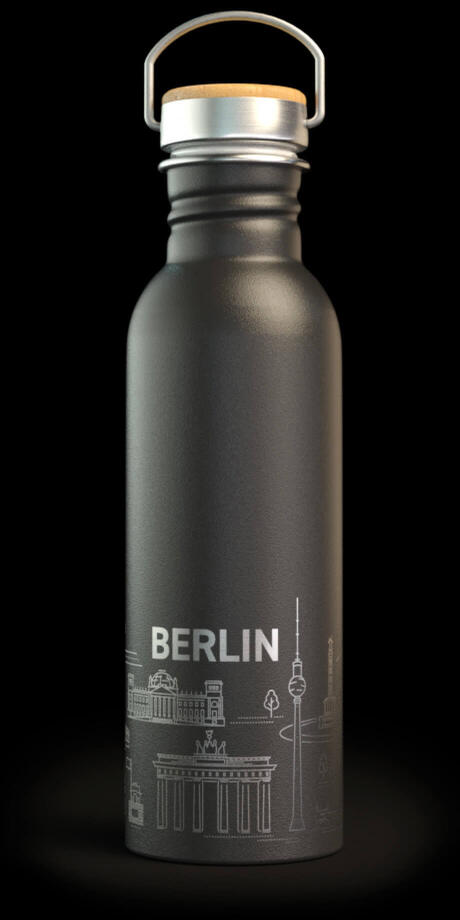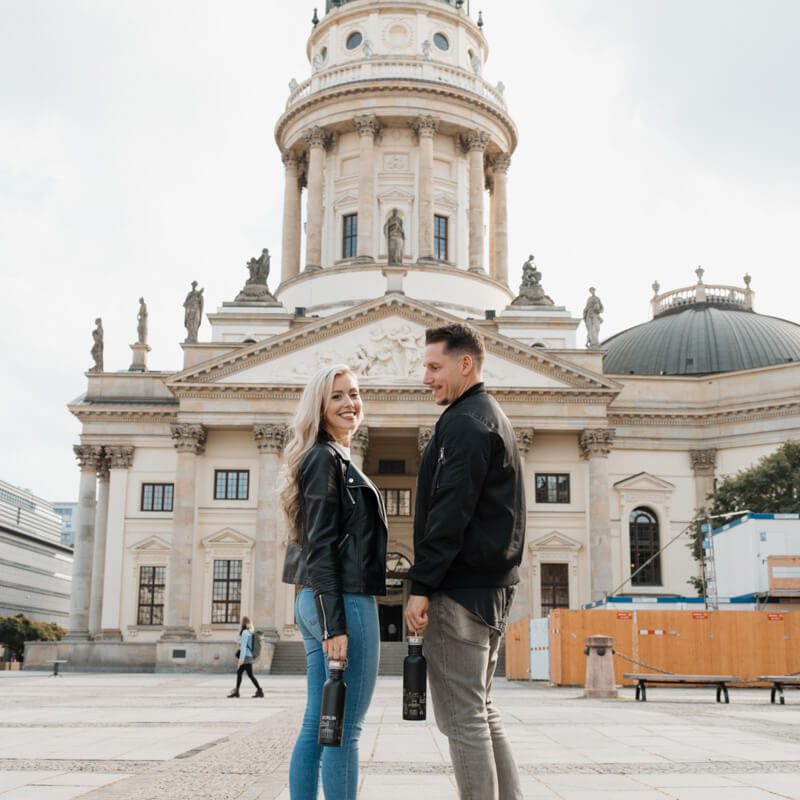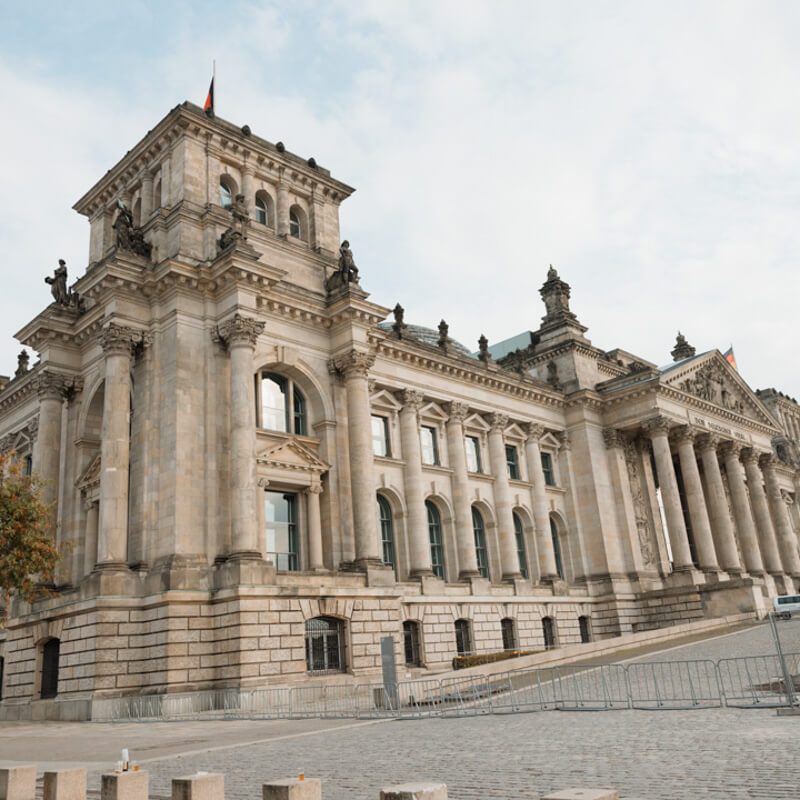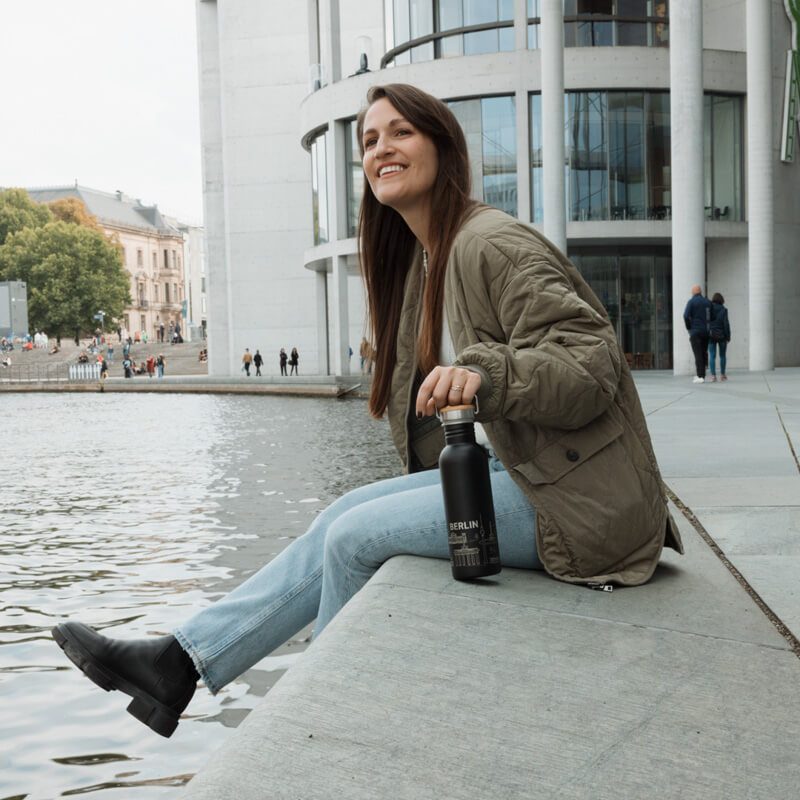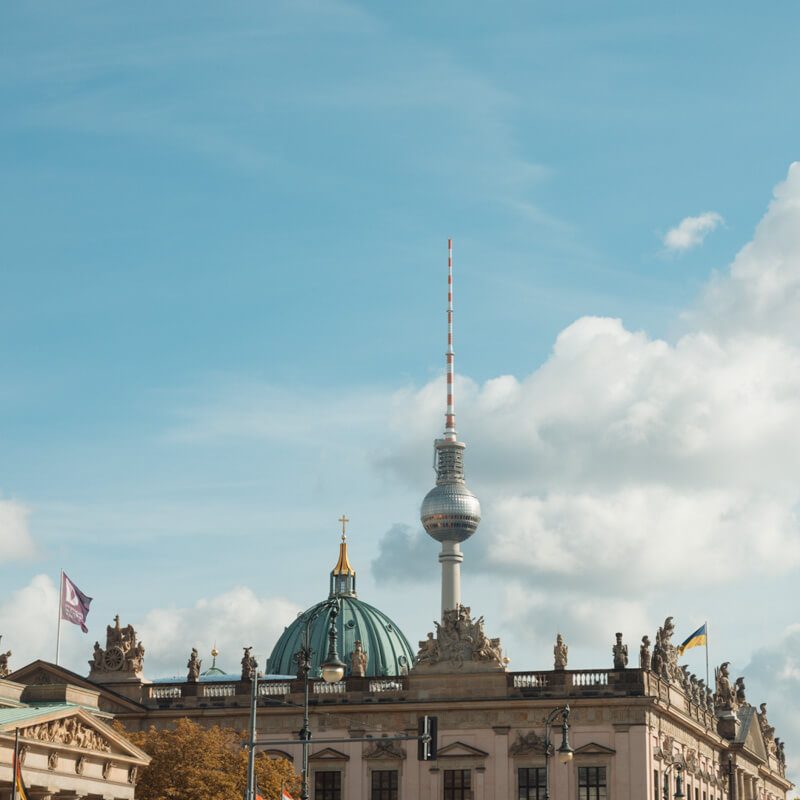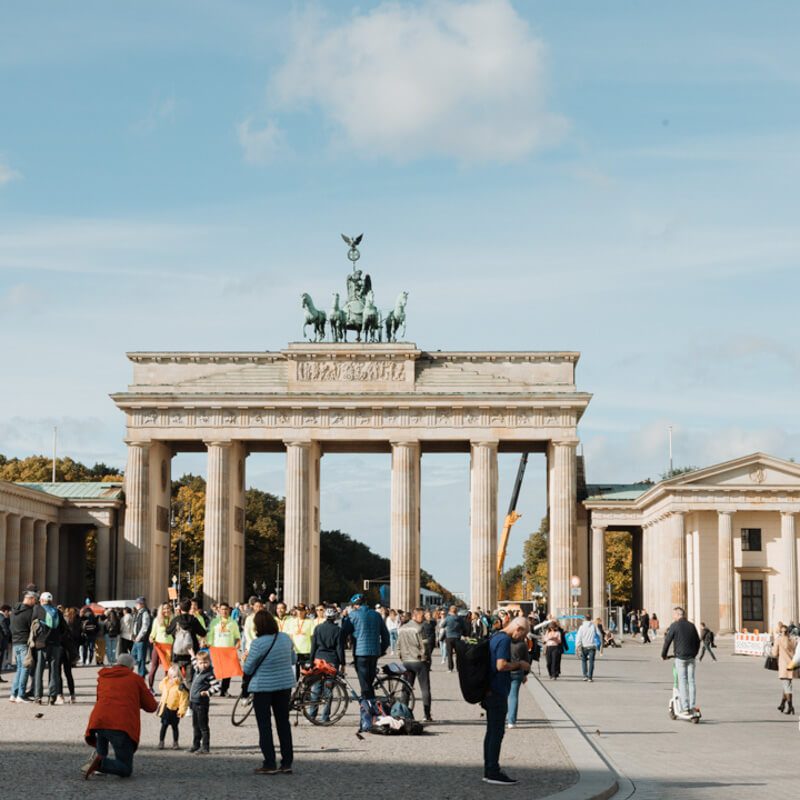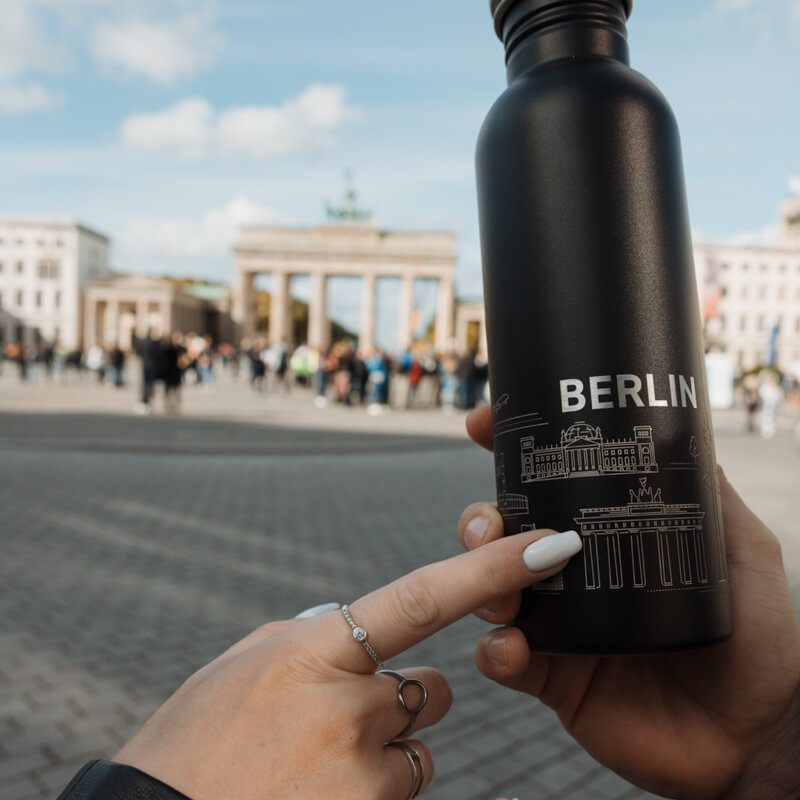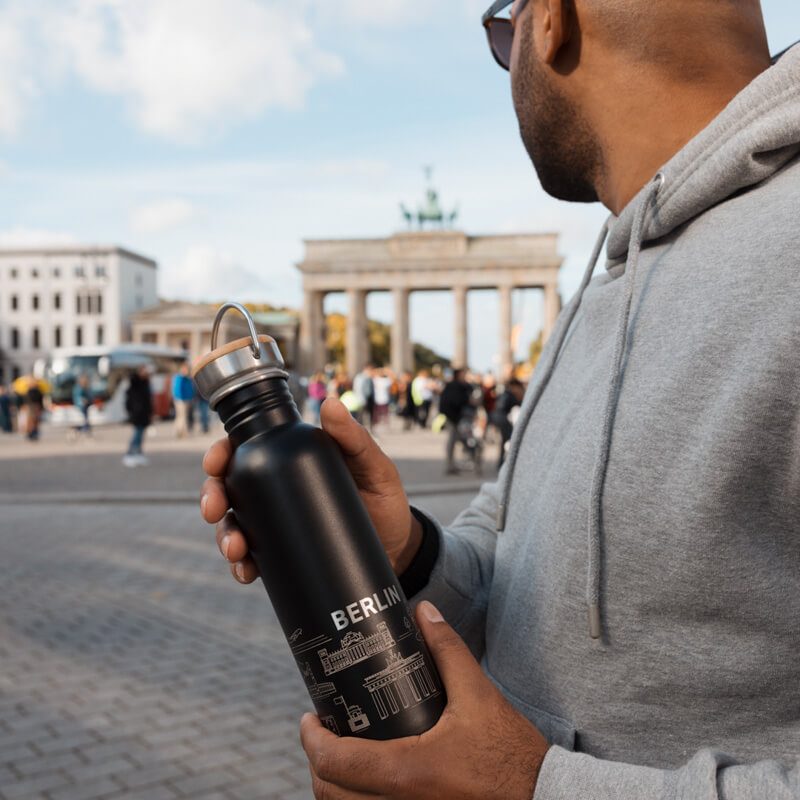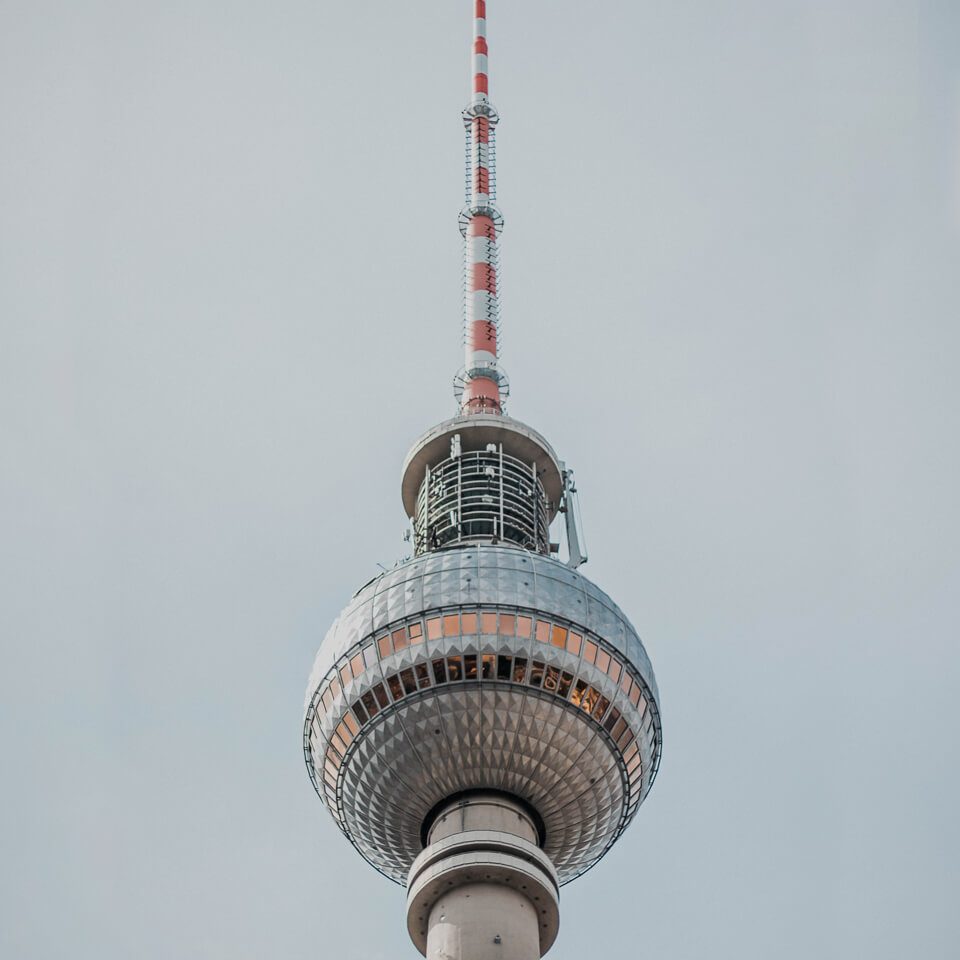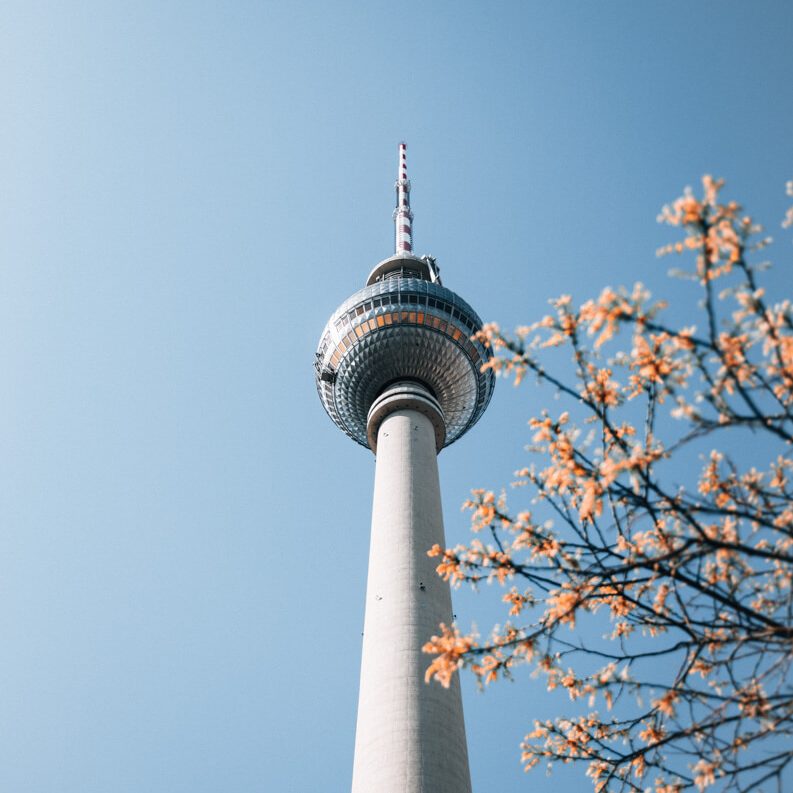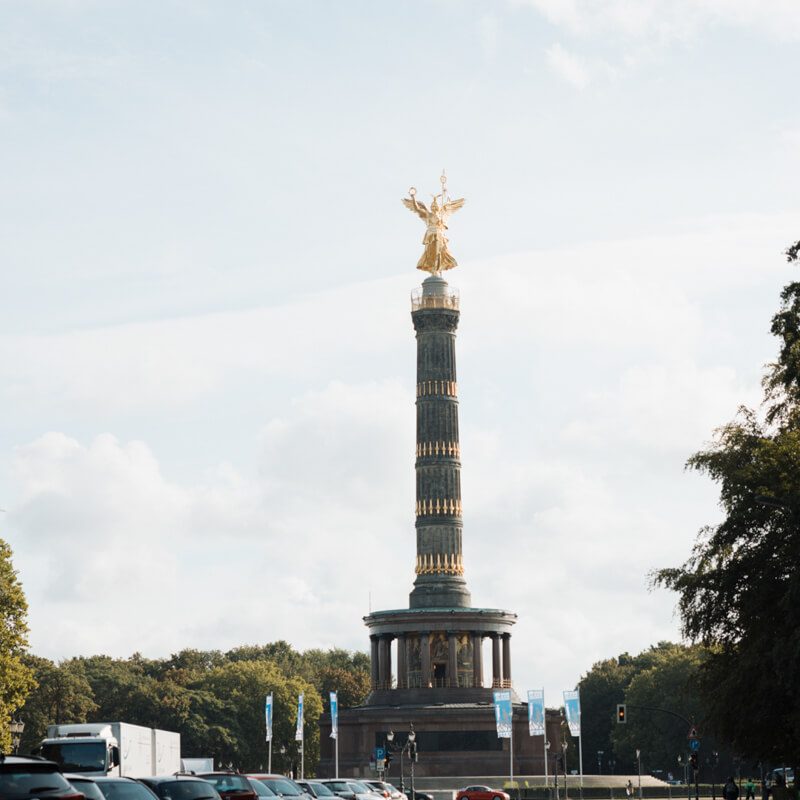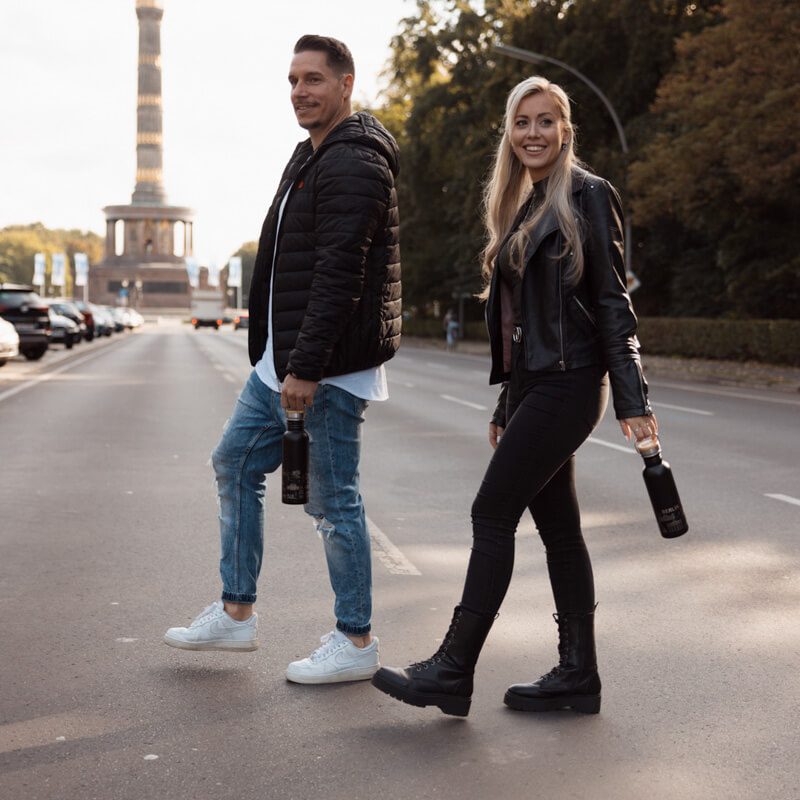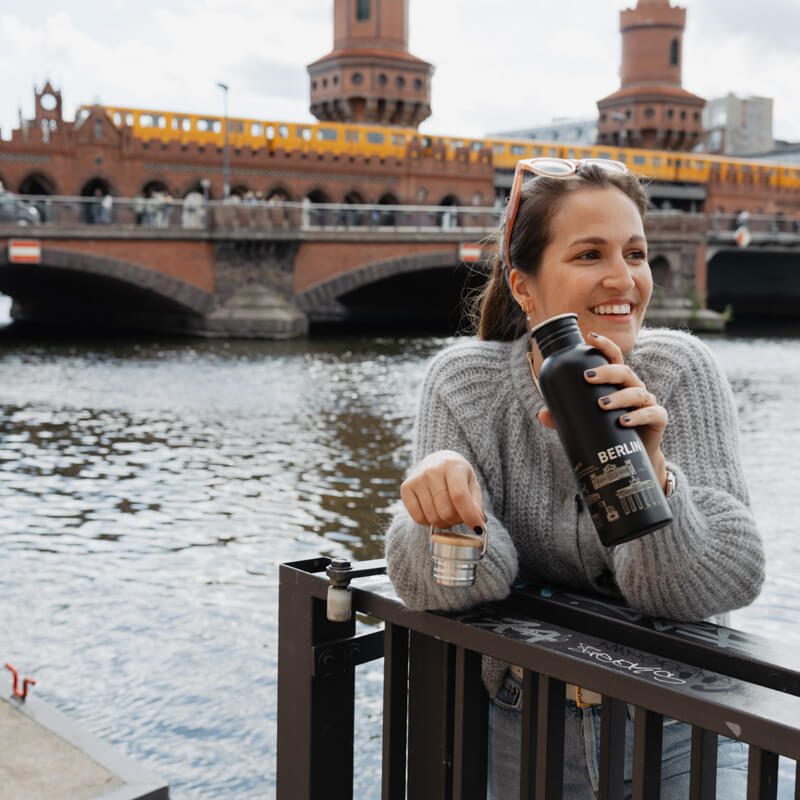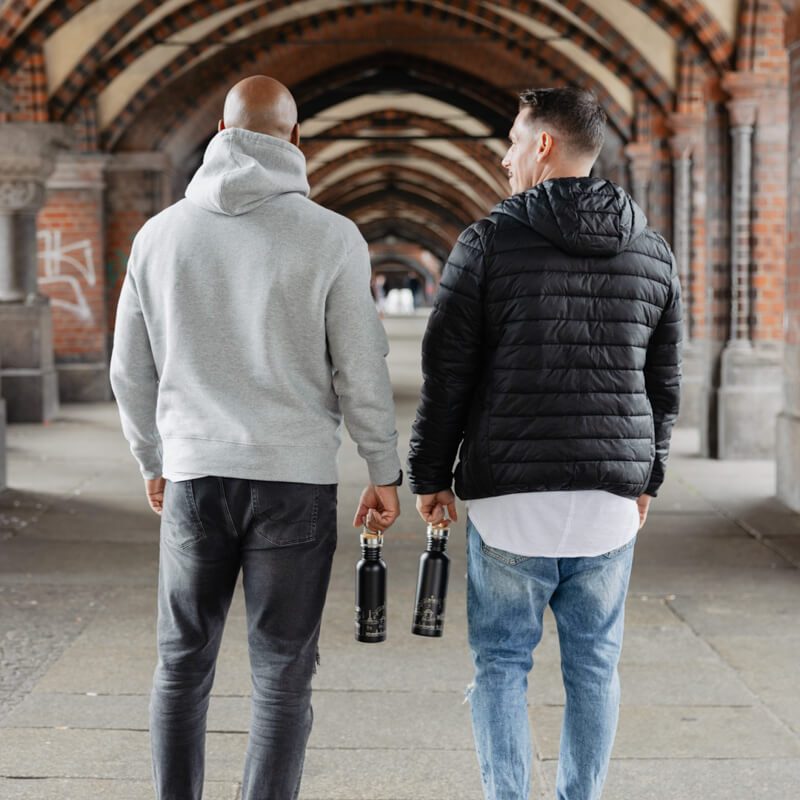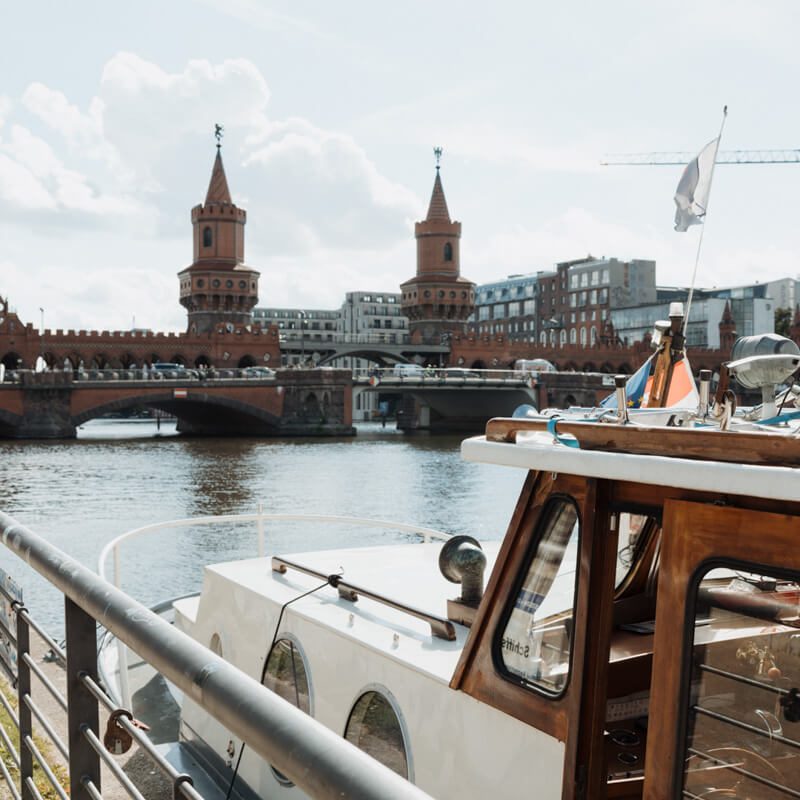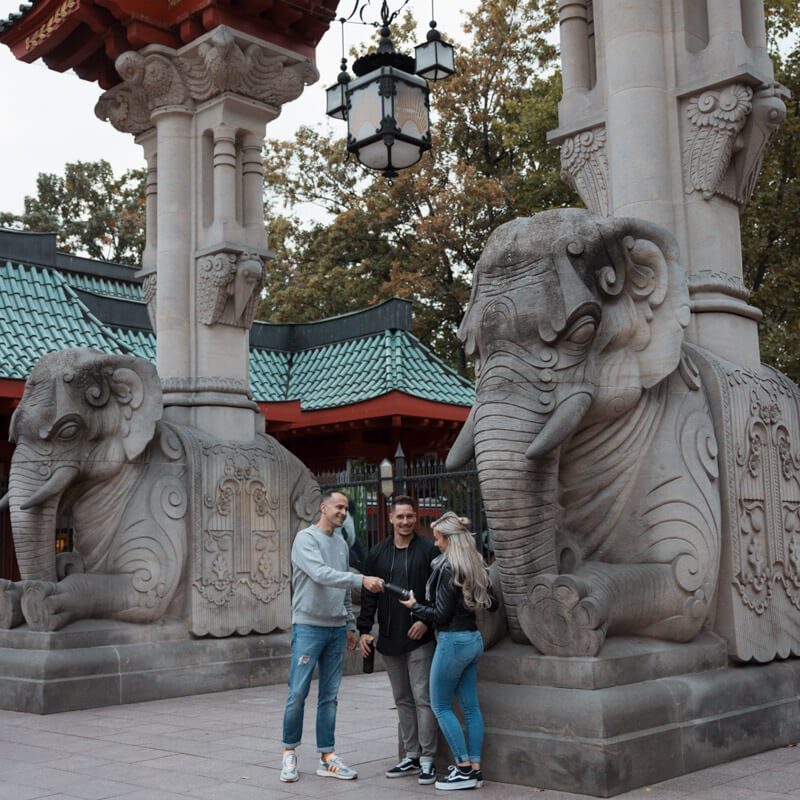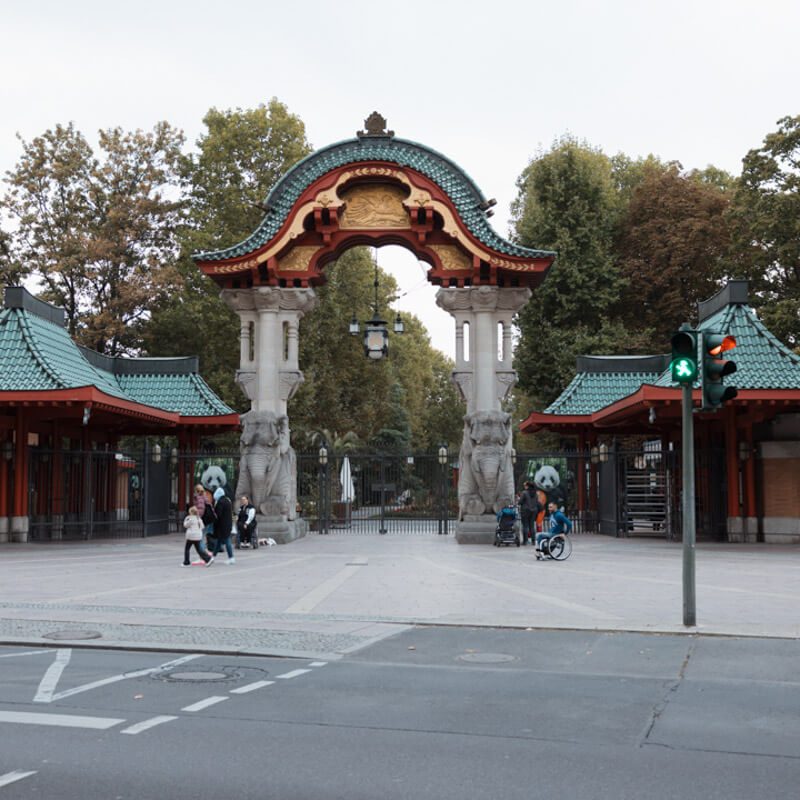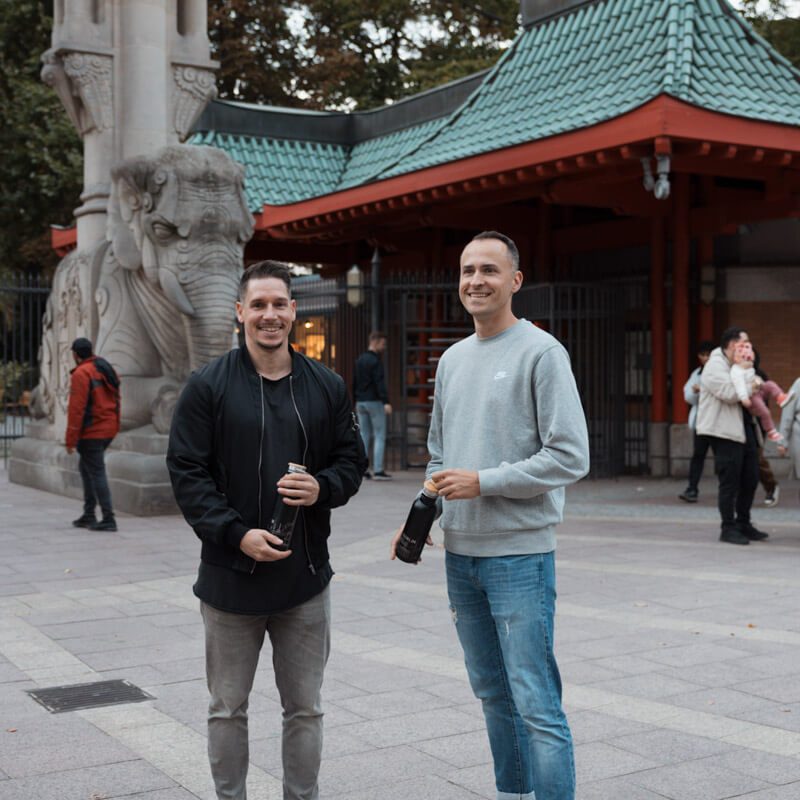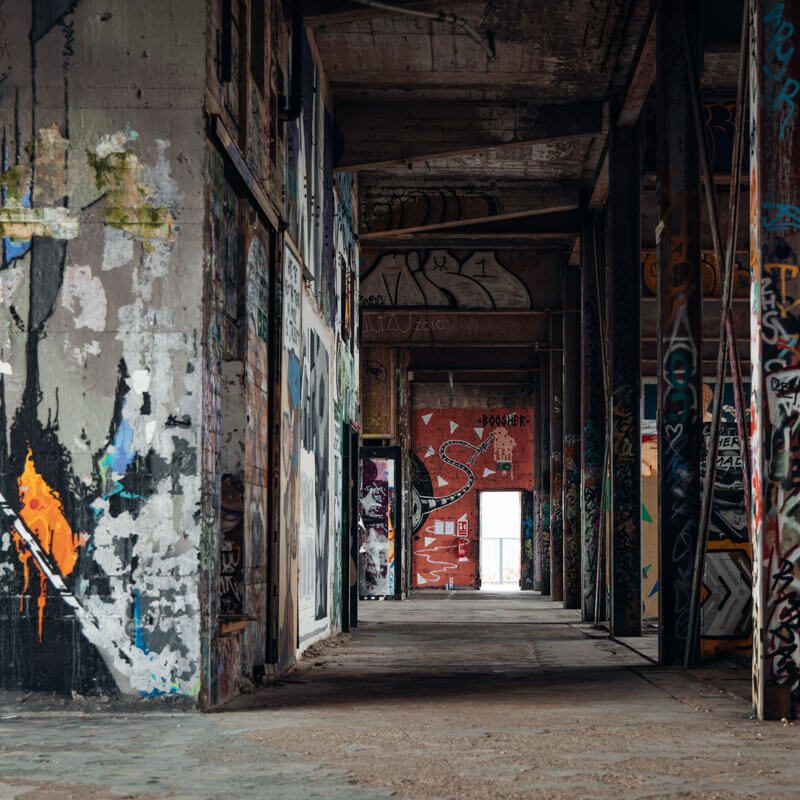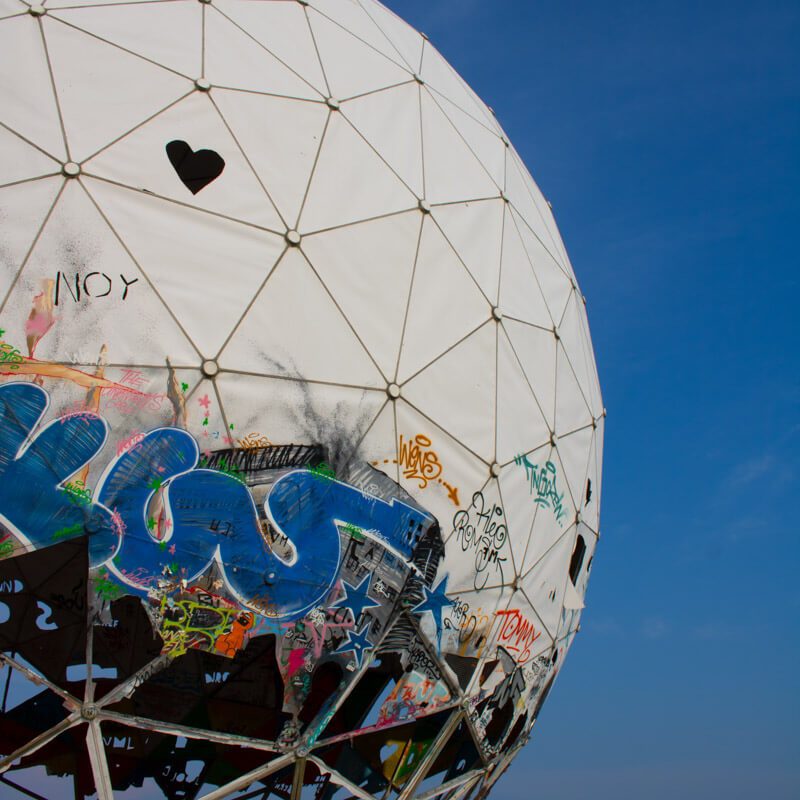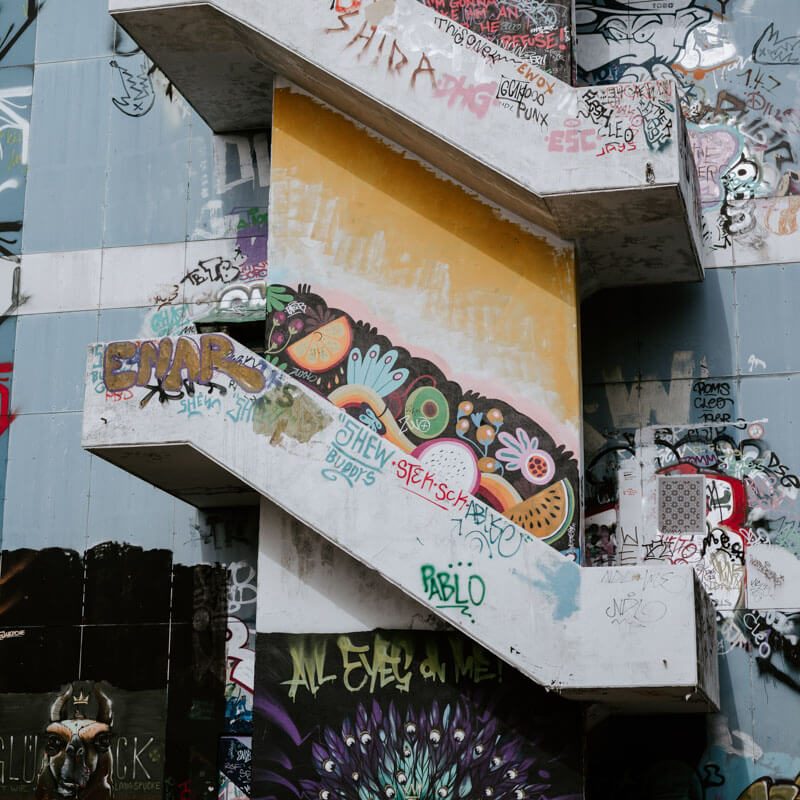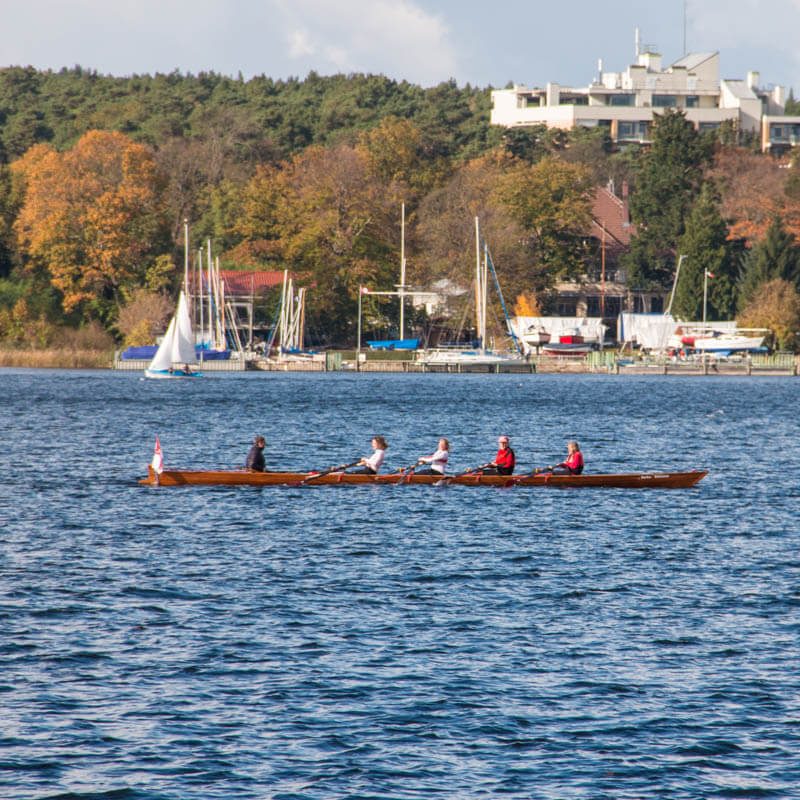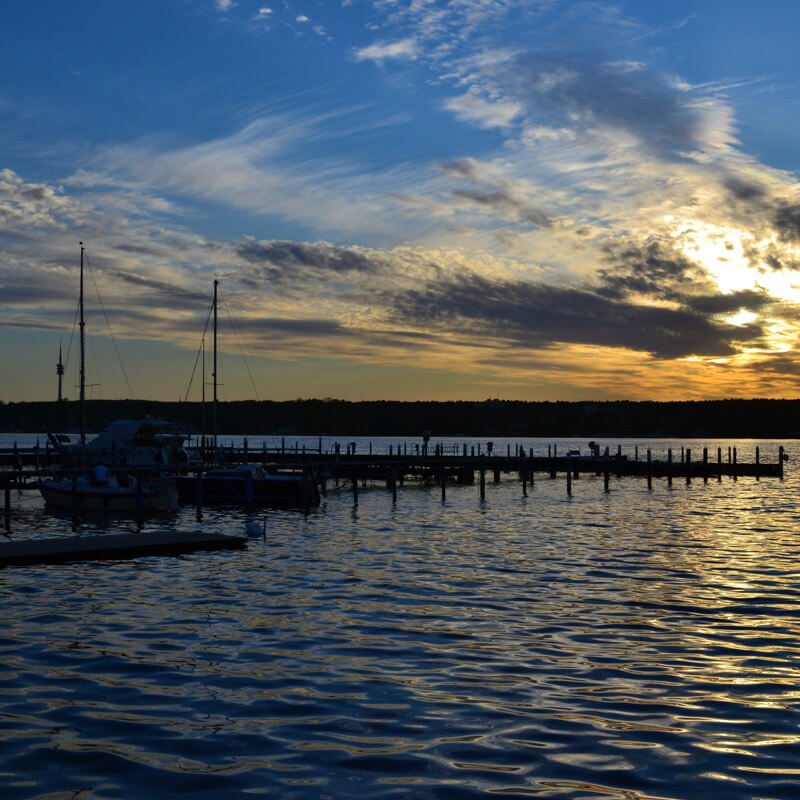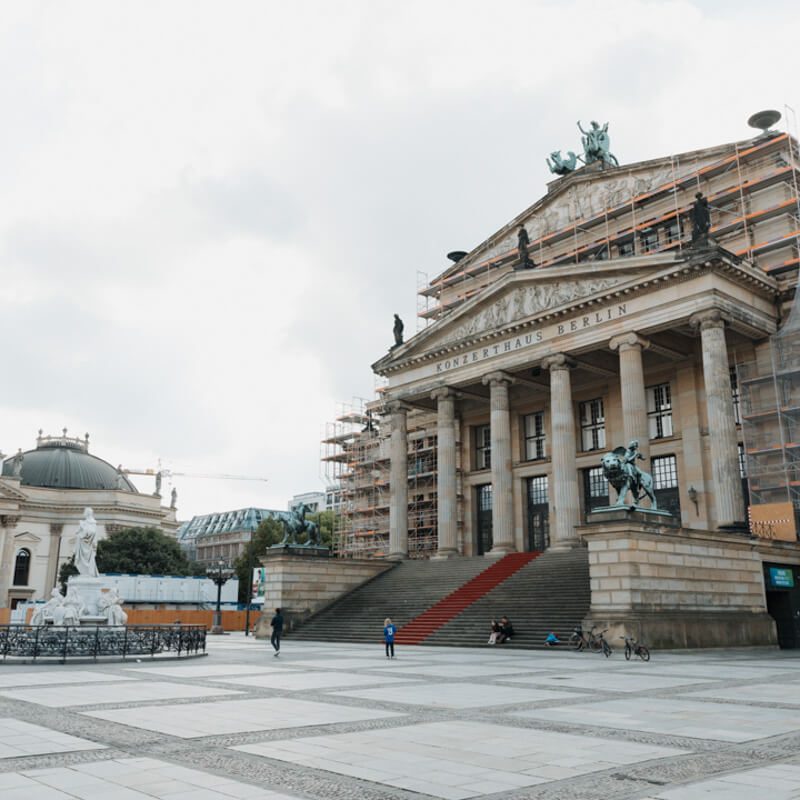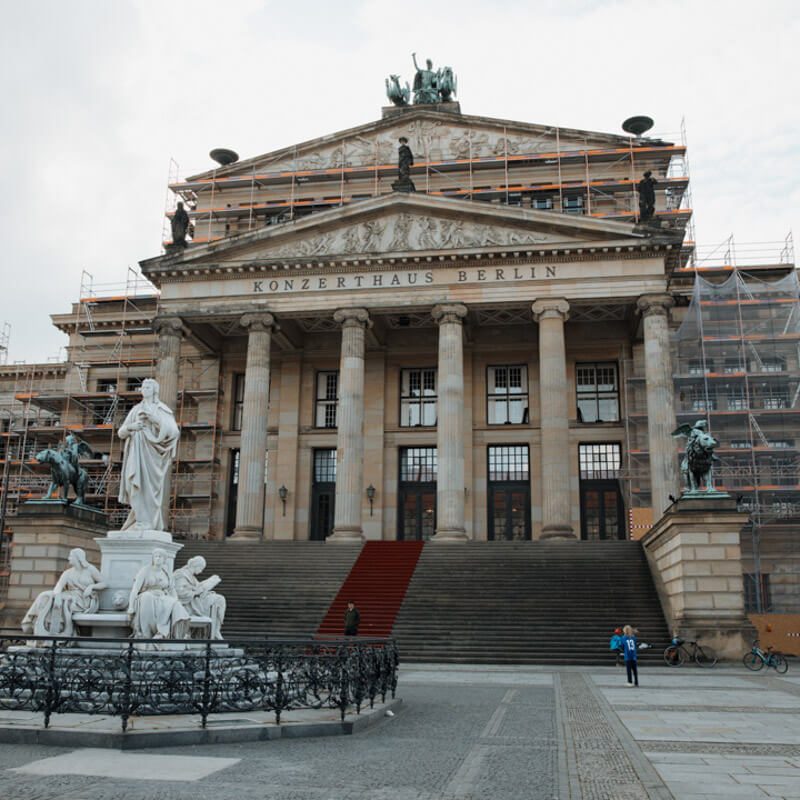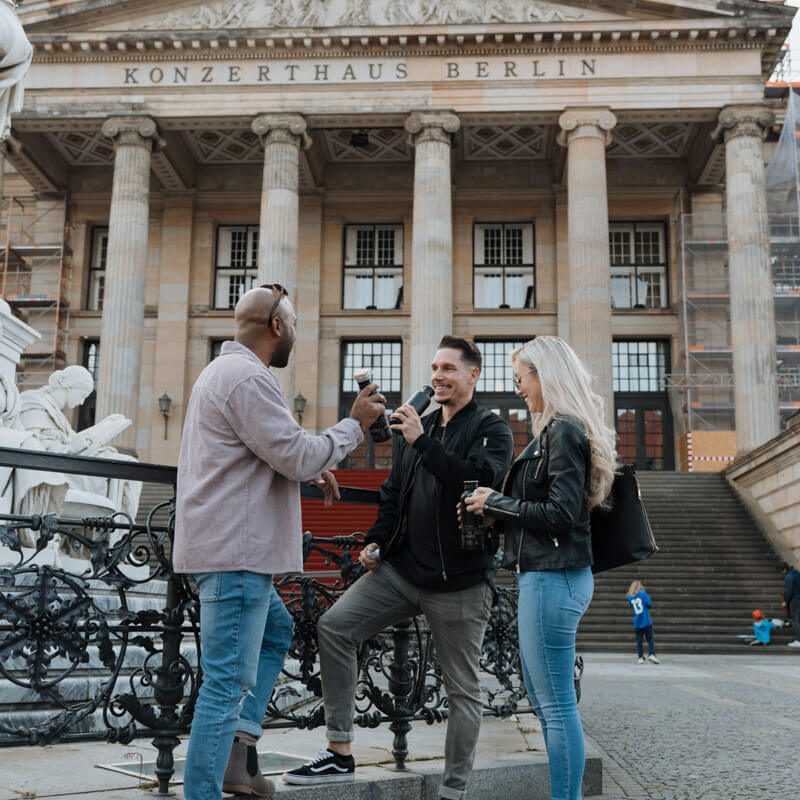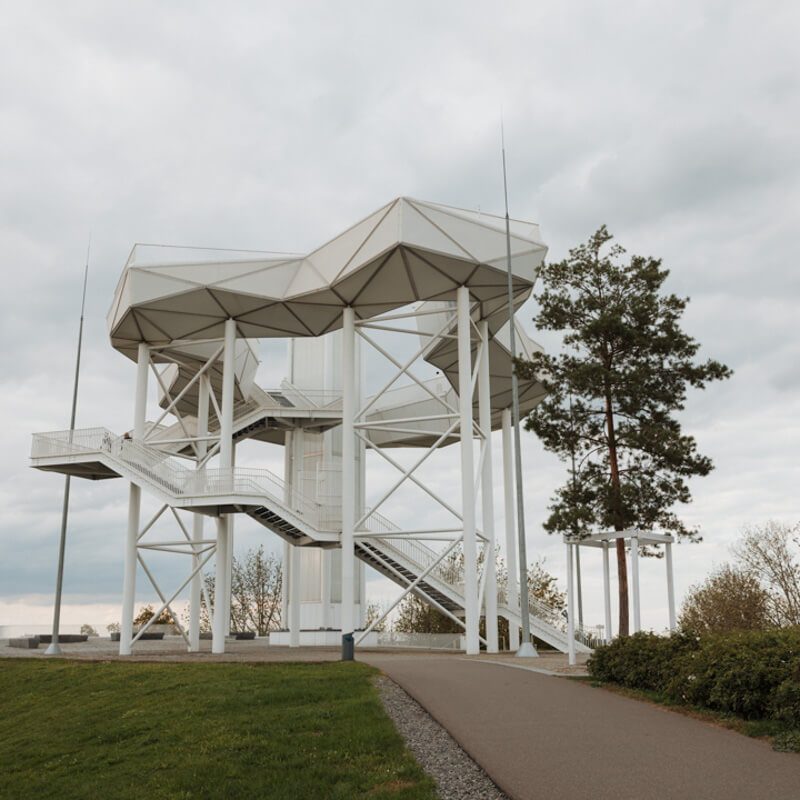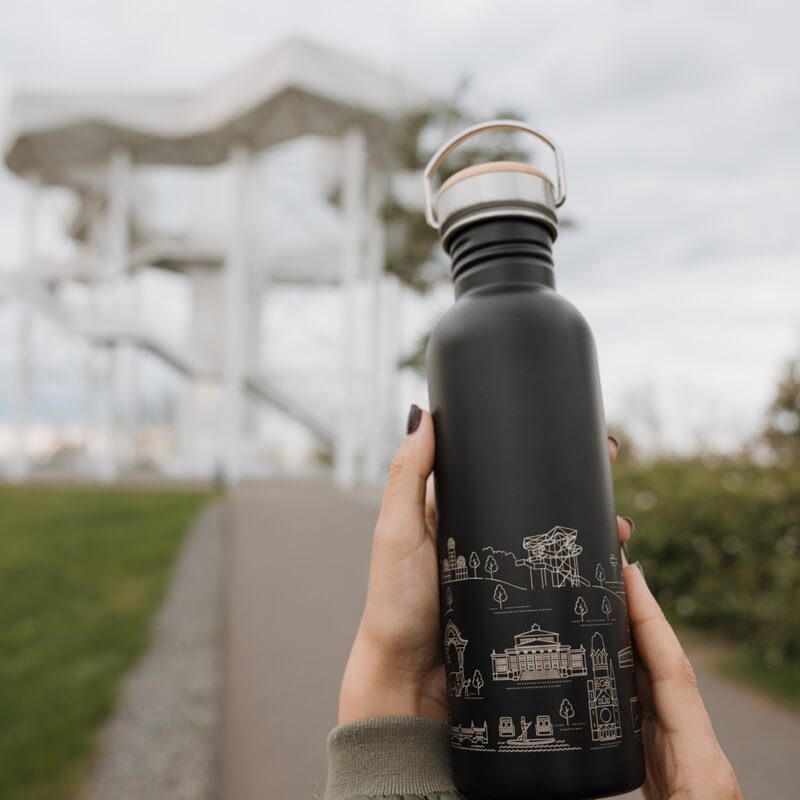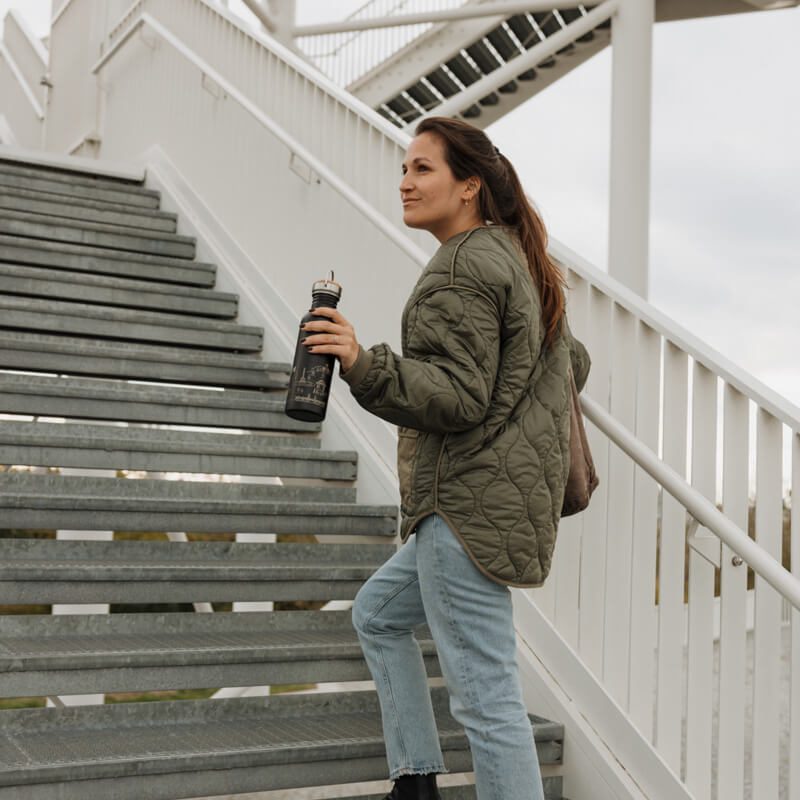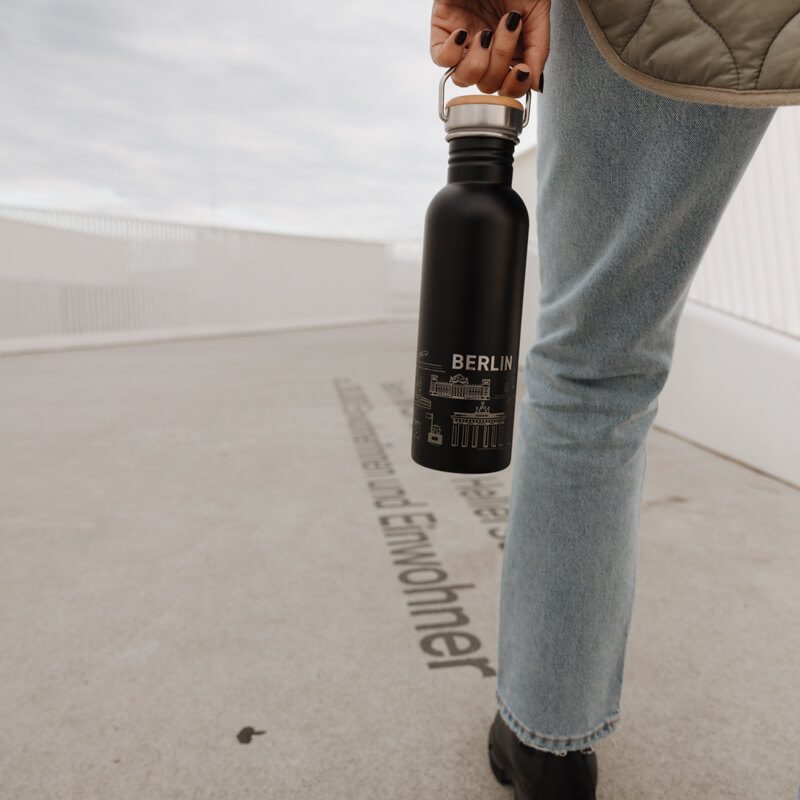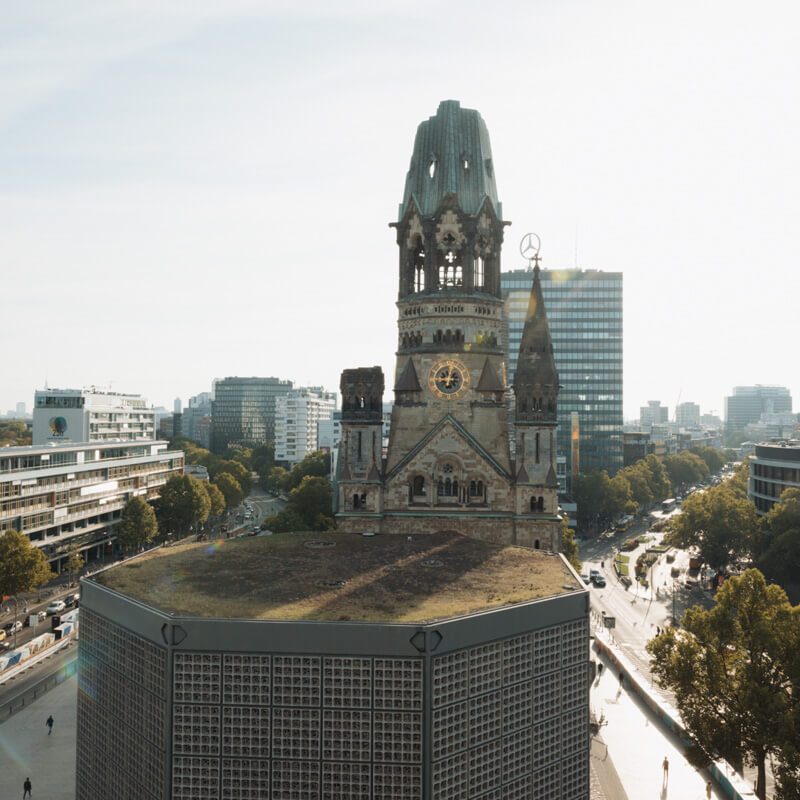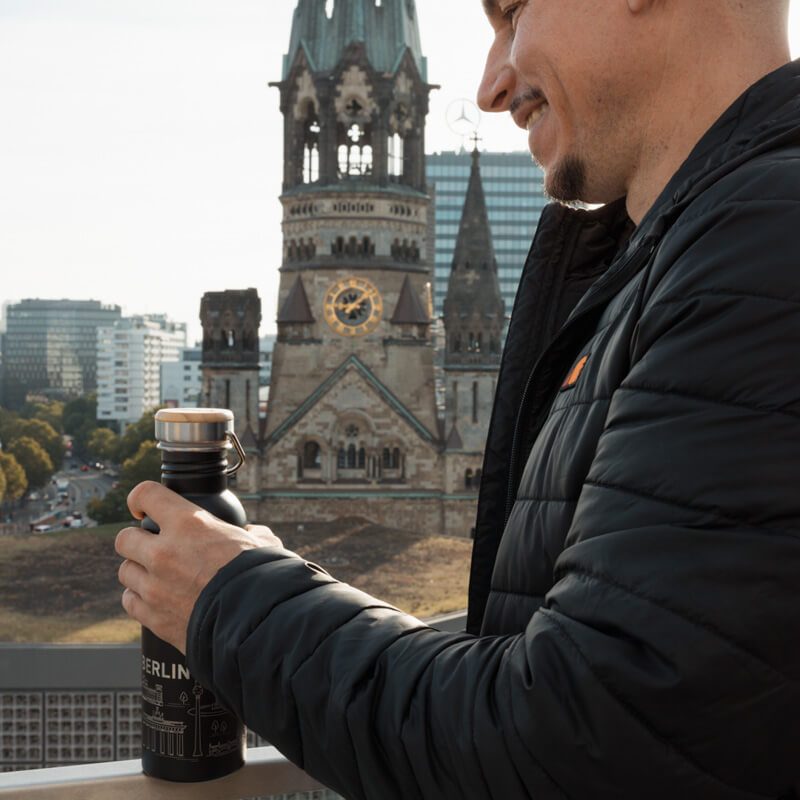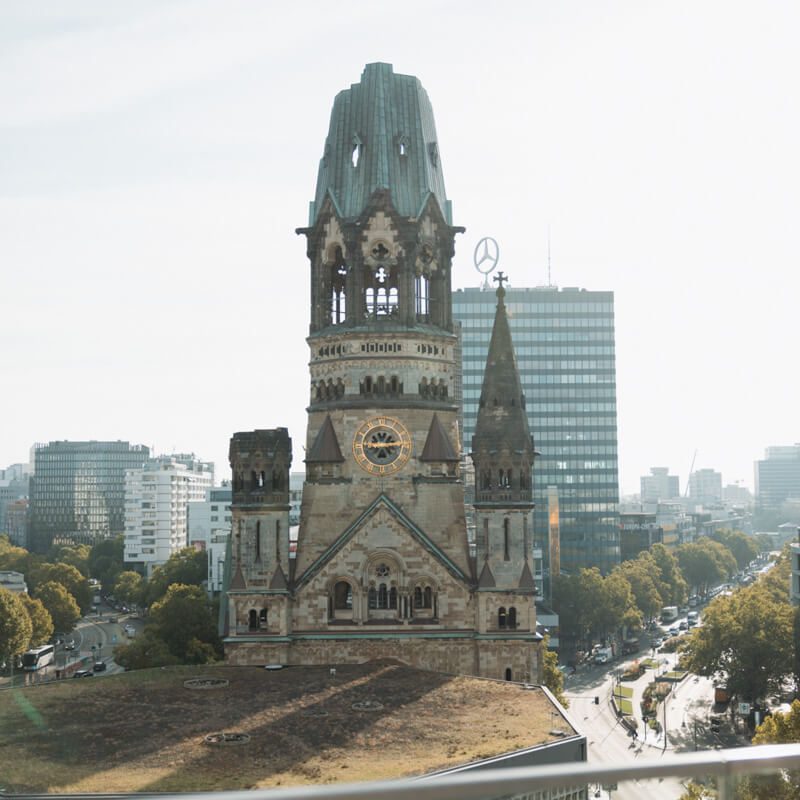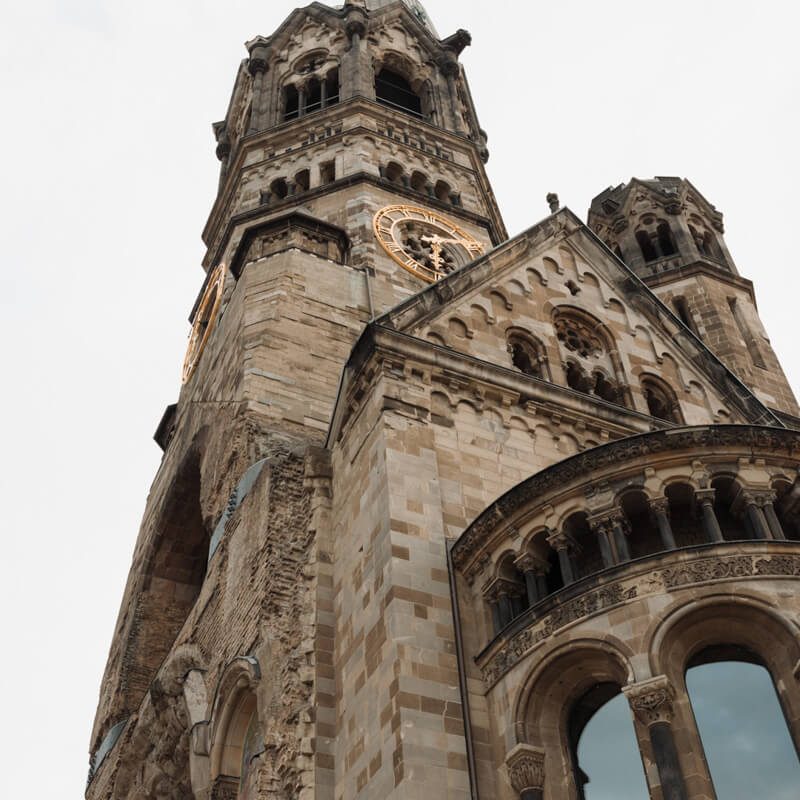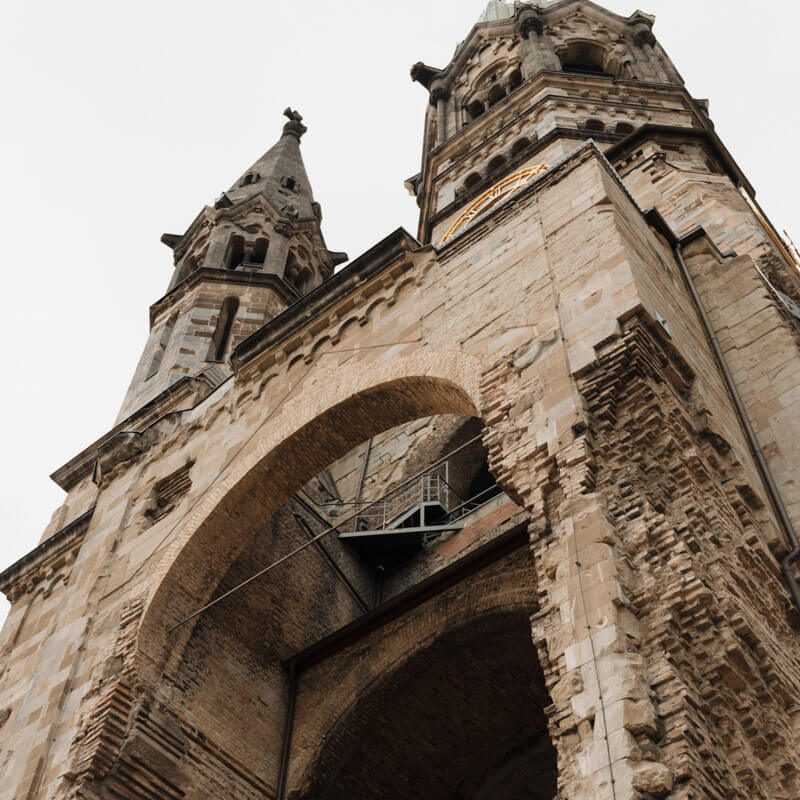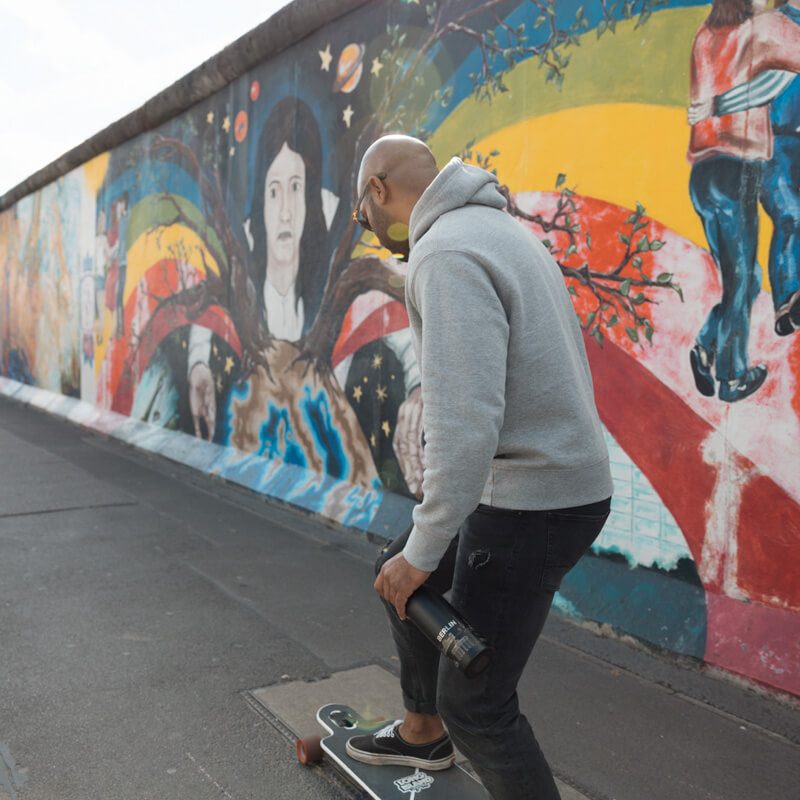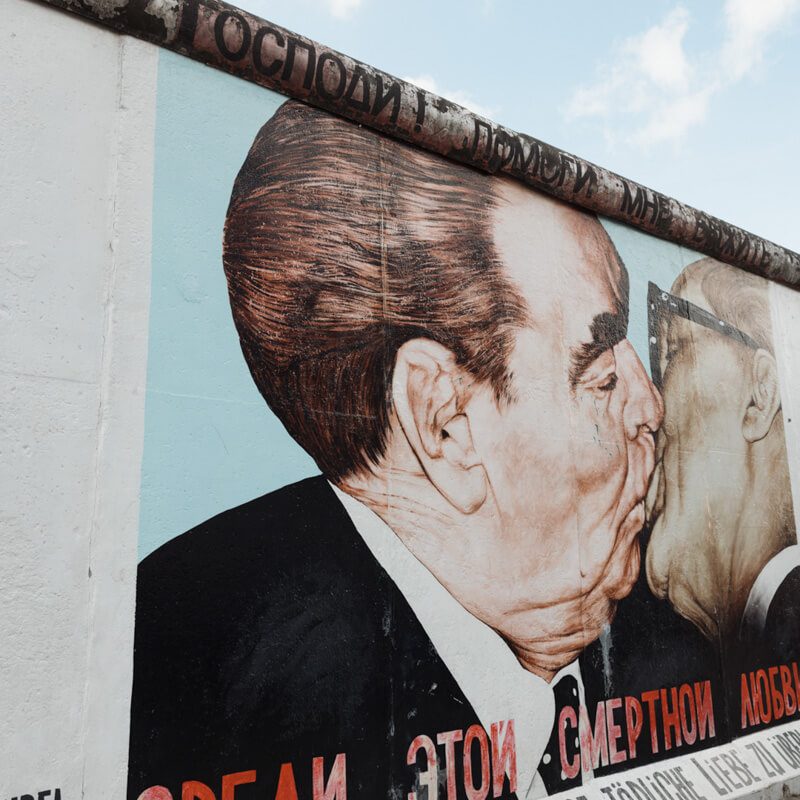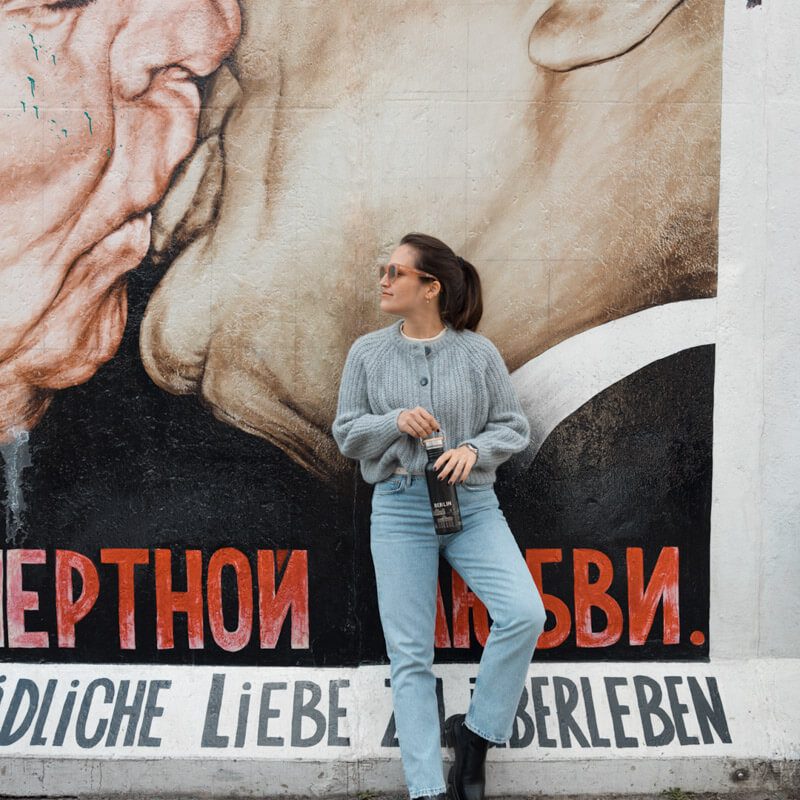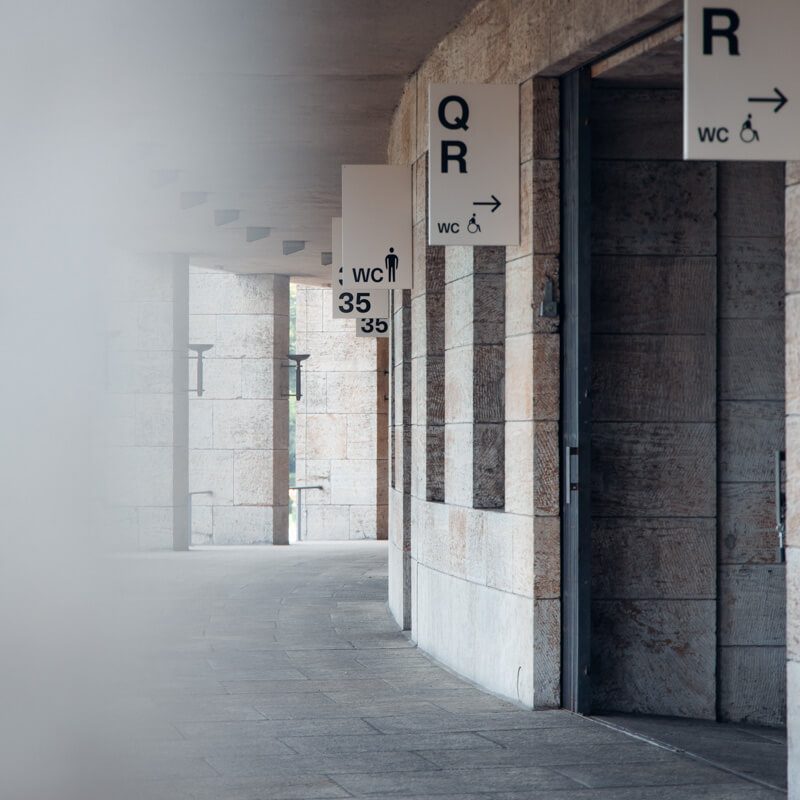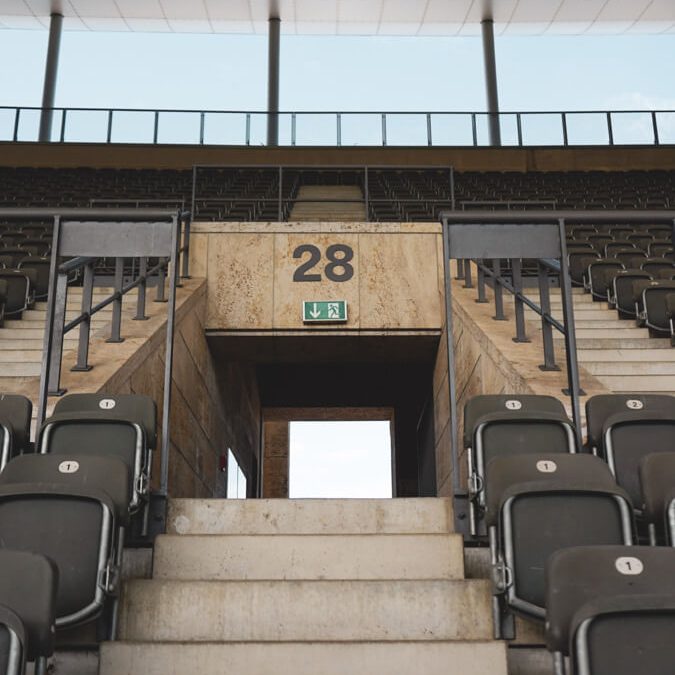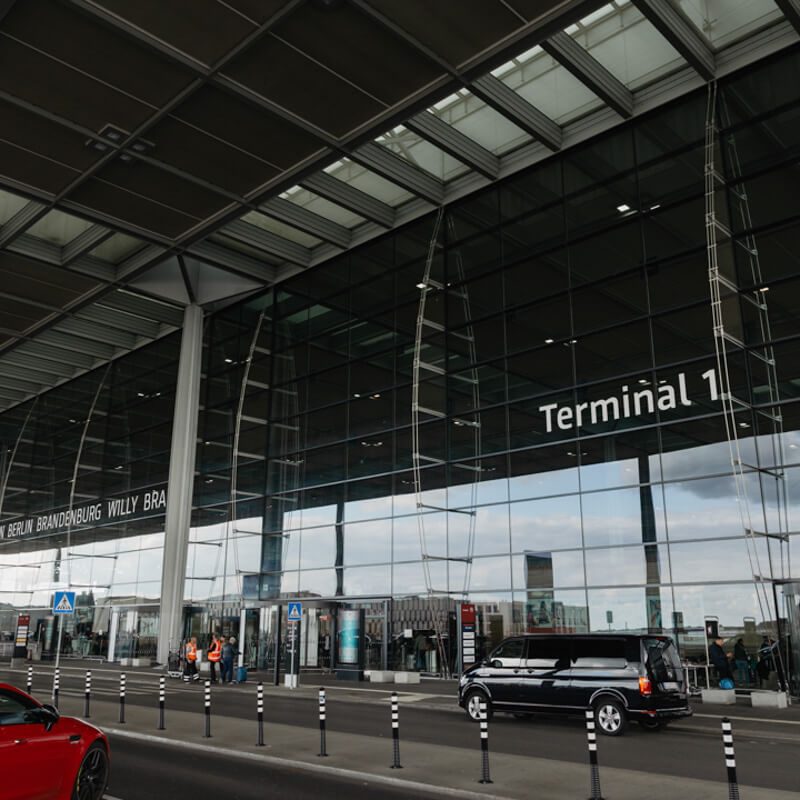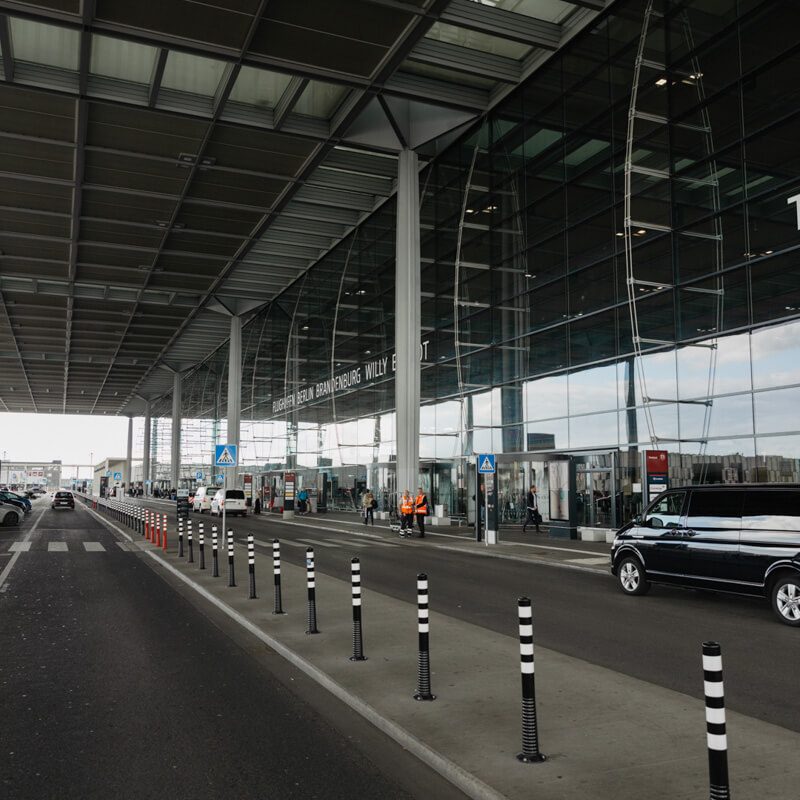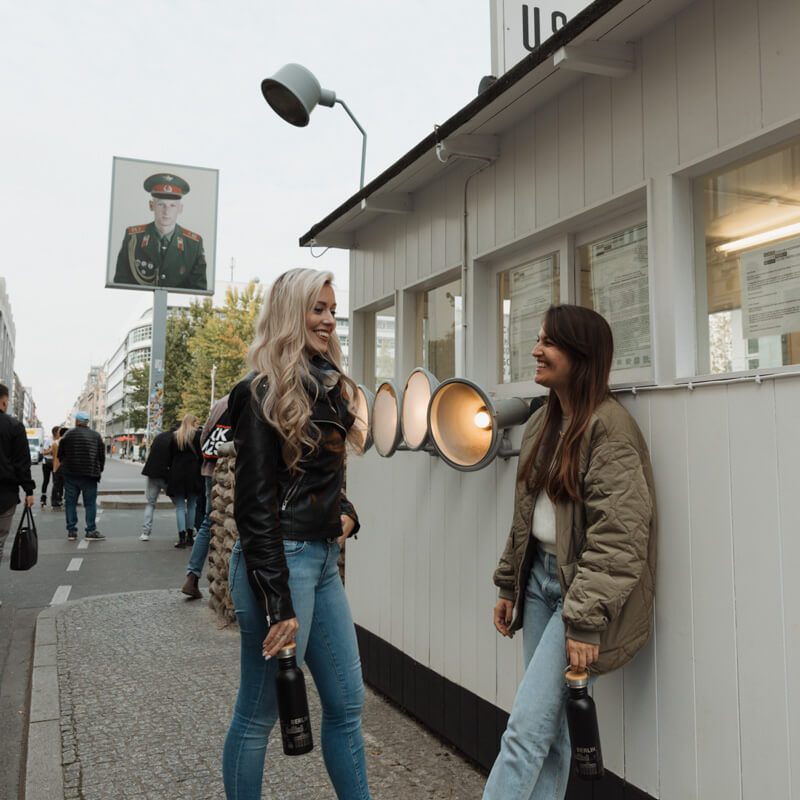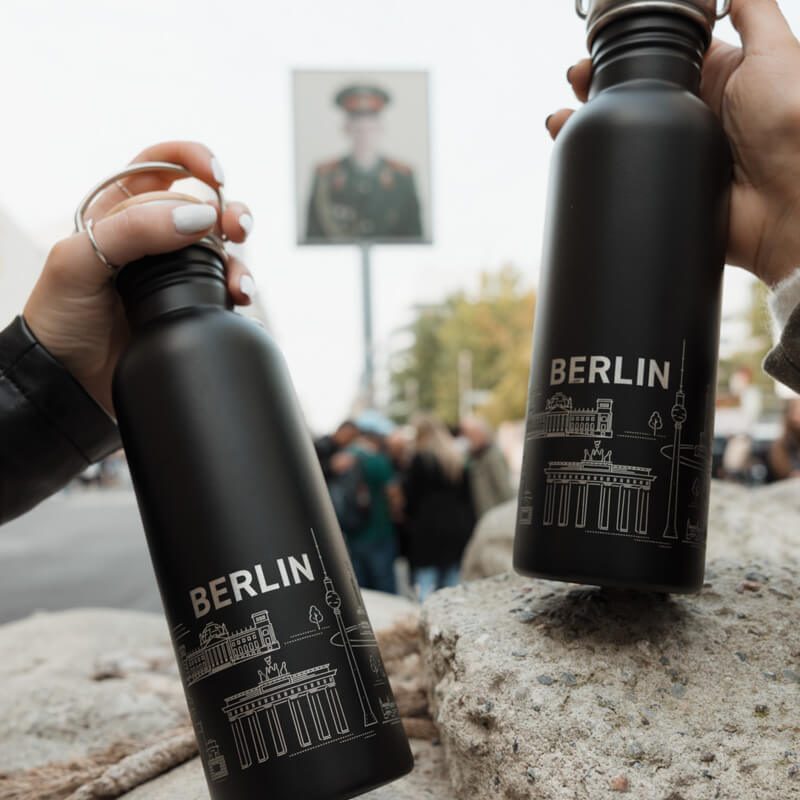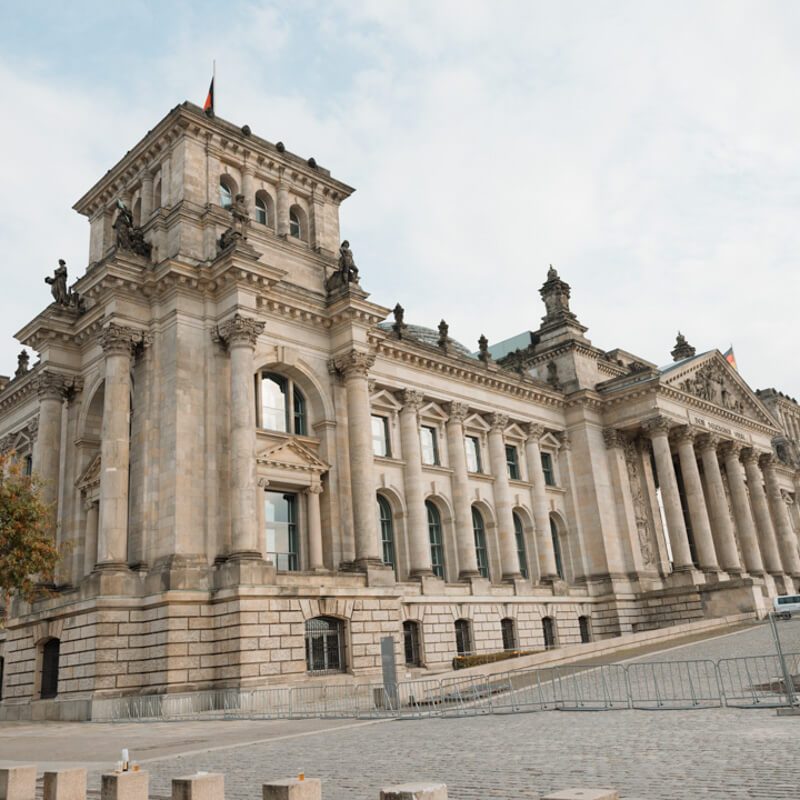Berlin is a sight in itself. With its many districts and parts of the city, Germany's capital exudes a great deal of charm.
Welcome to Berlin
- Population: 3.669.491
- Total area: 49.335 ha
- Length of the city boundary: 234 km
(October/22, Source: berlin.de/berlin-im-ueberblick/zahlen-und-fakten/)
Districts and Boroughs
Berlin is divided into 12 districts and 23 boroughs. Charlottenburg, Kreuzberg, Marzahn, Tempelhof and more - each district exudes its own charm and is well worth a visit.
Districts:
Mitte, Friedrichshain-Kreuzberg, Lichtenberg, Mahrzahn-Hellersdorf, Treptow-Köpenick, Neukölln, Tempelhof-Schöneberg, Steglitz-Zehlendorf, Charlottenburg-Wilmersdorf, Spandau, Reinickendorf, Pankow.
Boroughs:
Charlottenburg, Friedrichshain, Hellersdorf, Hohenschönhausen, Köpenick, Kreuzberg, Lichtenberg, Marzahn, Mitte, Neukölln, Pankow, Prenzlauer Berg, Reinickendorf, Schöneberg, Spandau, Steglitz, Tempelhof, Tiergarten, Treptow, Wedding, Weißensee, Wilmersdorf, Zehlendorf
(Source: https://www.berlin.de/special/stadtteile/ )
Guided tours
In Berlin there are various guided tours to experience the city and its neighborhoods.
https://www.berlin.de/tourismus/stadtfuehrungen/stadtteile-und-kieze/
Mobile in Berlin
Public transport
https://www.berlin.de/tourismus/infos/nahverkehr/
Brandenburger Tor
The Brandenburg Gate is a must-see for every visitor to Berlin. Hardly any other sight is on so many tourist selfies as the great sandstone gate in the heart of the city.
The Brandenburg Gate plays a correspondingly important role on city tours and during events in the capital such as New Year's Eve or Berlin Lights. Once the gate was a memorial of division - it was located in the restricted area after the construction of the Wall and could not be visited by East or West Germans. After the fall of the Wall, it has become a symbol of German unity.
Berlin owes the Brandenburg Gate to King Frederick William II, who had commissioned the large sandstone gate to have a dignified conclusion of the magnificent boulevard Unter den Linden. The gate is one of the largest and most beautiful buildings of classicism. It was built between 1788 and 1791 according to designs by Carl Gotthard Langhans the Elder, who was strongly inspired by the Propylaea of the Athenian Acropolis. Two years after the Brandenburg Gate was completed, the Quadriga, a chariot pulled by four horses, was placed on the roof of the gate.
(Source: berlin.de/sehenswuerdigkeiten/3560266-3558930-brandenburger-tor.html)
Sightseeing time
You should allow at least 30 minutes for relaxed sightseeing, taking a few pictures and exploring the place.
Address
Pariser Platz, 10117 Berlin
Accessible with
Subway
U5: Brandenburger Tor
Suburban railroad
S1, S2, S25, S26: Brandenburger Tor
Bus
100: Reichstag/Bundestag
300: Behrenstr./Wilhelmstr.
100: S+U Brandenburger Tor
147: Unter den Linden/Glinkastr.
TV Tower
City 2: Guillaume Tronel
City 3: Kevin Oetiker
What would Berlin be without the TV Tower? The TV Tower at Alexanderplatz is not only the tallest building in Germany, but also the city's landmark.
- 203 meters high
- visibility 80 km
- fast elevator (6,0 m/s)
The world's largest continuous warehouse complex, now over a hundred years old, and a UNESCO World Heritage Site - that is Speicherstadt Hamburg. Here, visitors to Hamburg can expect an idyll that they would hardly have expected to find in a world port: Wilhelminian brick Gothic of the Gründerzeit, bizarre gables and turrets reflected in the canals.
The world's largest contiguous complex of warehouses was built starting in 1883, five years before Hamburg received its free port. Since 1991, the unique district has been listed as a historic monument. The warehouses are built on pine piles, and the district is crisscrossed by the so-called Fleeten - canals that are flooded depending on the tide and can then also be navigated by ship.
(Text: hamburg-tourism.de/sehen-erleben/hamburg-maritim/speicherstadt)
Visit
Adults from 21,50 Euro, students from 17,20 Euro, children (4-14 years) from 11,50 Euro, children up to three years free of charge
Opening hours
Daily from 10:00 to 22:00
Address
Further Information
The TV Tower is not barrier-free. For safety reasons, people with walking disabilities do not have access to the TV Tower. Animals have no access
Accessible with
Subway
U8, U5, U2: S+U Alexanderplatz Bhf
U5: Rotes Rathaus
U2: Klosterstr.
Suburban railroad
S3, S5, S7, S9: S+U Alexanderplatz Bhf
Bus
100, 200, N8, N40, N60, N65, N42: S+U Alexanderplatz Bhf/Memhardstr.
100, 200, N40, N42, N60, N65, N8, M1: Spandauer Str./Marienkirche
200, 300, N40, N42, N60, N8: U Rotes Rathaus
248, 300, N8: S+U Alexanderplatz Bhf/Grunerstr.
248, 300, N8: Littenstr.
100: Memhardstr.
N42: S Hackescher Markt
248, 300, N8: Jüdenstr.
N60, N65: U Alexanderplatz [Tram]
M1, N42: U Weinmeisterstr.
Siegessäule
In the middle of the Tiergarten Berlin, surrounded by green parkland, it stands: the Berlin Victory Column, crowned with the famous Goldelse. Enjoy the view from the platform!
- The Victory Column has a height of 67 meters
- Was moved 1.6 km in 1938/39
- A spiral staircase with 285 steps leads to the viewing platform
The Victory Column was originally erected on Königsplatz in front of the Reichstag (today's Platz der Republik) from 1864 to 1873 according to the plans of Heinrich Strack. The reason for its construction was Prussia's victory in the German-Danish War of 1864. Within a few years, two other victorious wars were added, the German War of 1866 against Austria and the German-French War of 1870/1871. The three column segments were originally intended to commemorate these three victories - today called the Unification Wars. You can trace the path to the founding of the German Reich on the bronze reliefs and mosaic images in the colonnade.
During the National Socialist era, the Victory Column was raised by a fourth drum, so that today it has a total height of 67 meters. In 1938/39, for the planned transformation of Berlin into the "Reich Capital Germania", the monument was moved about 1.6 km to the west - to the Großer Stern in the middle of the Tiergarten, where it still stands today. After surviving the war largely undamaged, the Victory Column was restored in the mid-1980s and is now a listed building.
Visit
Mon-Fri: 9:30-18:30
Sat, Sun, Holidays: 9:30-19:00
Prices
Adults: 3,50 €
Reduced: 3,00 €
Address
Grosser Stern
110785 Berlin
Accessible with
Bus
100, 187, 106, N26: Großer Stern
100, 187: Schloss Bellevue
Oberbaumbrücke
The eye-catching Oberbaum Bridge connects the districts of Friedrichshain and Kreuzberg and is considered the most beautiful bridge in Berlin.
- Berlin has almost 1000 bridge structures from different style periods
- The Oberbaum Bridge carries the oldest subway line in Berlin
Architecture of the Oberbaumbrücke
Media Spree around the Oberbaumbrücke
Accessible with
Subway
U1, U12, U3: S+U Warschauer Str.
Suburban railroad
S3, S5, S7, S9, S75: S+U Warschauer Str.
Bus
347: Oberbaumbrücke
347 M13 300: S+U Warschauer Str.
300: Tamara-Danz-Str.
347: Stralauer Allee
347: Helsingforser Platz
M13: Berlin, Revaler Str.
Zoological Garden
Zoo Berlin - a zoo of superlatives! It is not only the oldest as well as most visited zoo in Germany, but also the most species-rich in the world. Among its inhabitants are the only giant pandas in Germany!
(Text: zoo-berlin.de/de)
The Tierreich was founded in 1844 on the initiative of the naturalists Alexander von Humboldt and Martin Lichtenstein, making it the first zoo in Germany. With the help of garden artist Peter Joseph Lenné and renowned master builders, an attractive area was created with an antelope house (1872) and Persian Tower (1910) for equine animals. The entrances, the Lion Gate on Hardenbergplatz and the Elephant Gate on Budapester Straße, are small works of art from around 1900.
(Text: berlin.de/sehenswuerdigkeiten/3560141-3558930-zoo-berlin.html)
Opening hours
01 January to 27 February: 9 a.m. to 4.30 p.m.
28 February to 26 March: 9 a.m. to 6 p.m.
March 27 to September 25: 9 a.m. to 6:30 p.m.
September 26 to October 30: 9 a.m. to 6 p.m.
October 31 to December 31: 9 a.m. to 4:30 p.m.
The zoo closes at 2 p.m. on Dec. 24.
Prices:
Adults 17.50 euros, children (ages 4-15) 9 euros, children 3 and under free.
Address
Accessible with
Subway
U9 U12 U2: S+U Zoologischer Garten Bhf
U1 U9: U Kurfürstendamm
Suburban railroad
S3 S5 S7 S9: S+U Zoologischer Garten Bhf
Bus
109 110 204 245 249 M45 M46 M49 N10 N26 X10 X34 100 200 A05: S+U Zoologischer Garten Bhf
100 200 N9 U9 245 M45: S+U Zoologischer Garten/Jebensstr.
109 110 204 245 249 M45 M46 M49 N10 N26 X10 X34 100 200 U9: Hertzallee
100 200: Breitscheidplatz
M19 M29 M46 N26 204 249 U9 109 110 N10 X10: U Kurfürstendamm
M49 X34: Theater des Westens
M19 M29 M46 N26: Europa-Center
Teufelsberg
Image 1: Renzo Vanden Bussche
Image 2: Samuel Svec
Image 3: Nick R
Image 4: Moises Gonzalez
Teufelsberg in Grunewald is a mountain of rubble, a lookout point and a monument to history. The now dilapidated U.S. listening station on the summit can be visited.
Sports, recreation and guided tours
Streetart on the Teufelsberg
Duration of visit
Half a day to be able to visit the site
Prices:
Free walking of the site: Adults 8 euros, reduced 6 euros, children under 14 free.
Guided tours are possible
Address
Accessible with
Suburban railroad
S3, S9: Heerstraße (30 Minuten Gehzeit)
S7: Grunewald (30 Minuten Gehzeit)
Wannsee
Image 1: Peter Schulz
Image 2: Murat Tost Photograph
An Eldorado for water sports enthusiasts and recreation seekers are the many lakes in Berlin. 6.6 percent of the city area is water. Anyone who has not visited one of the large lakes does not understand the special quality of Berlin.
- The Strandbad Wannsee is one of the largest open-air swimming pools on an inland waterway in Europe.
- The Pfaueninsel, which can only be reached by ferry, invites you to linger.
To get an impression of the main lake district in Berlin's west, take a drive along the Havelchaussee (closed at night) to the Großer Wannsee. From Heerstraße (via Scholzplatz in Charlottenburg), you can reach this picturesque lakeside road and then drive through forests and along sand dunes, passing the 55-meter-high Grunewald Tower, built in 1897 in honor of Bismarck on the Karlsberg.
(Text: berlin.de/sehenswuerdigkeiten/3561521-3558930-wannsee.html)
There are many other sights and recreational opportunities at Wannsee. For example, Peacock Island, which can only be reached by ferry and has been a nature reserve since 1924. On it, walkers can enjoy nature, watch peacocks and visit the white castle, visible from afar, which Frederick William II had built at the end of the 18th century. The villa and garden of the painter Max Liebermann on the western shore of Wannsee are also worth a visit. So is the House of the Wannsee Conference, where the Nazis decided in 1942 to organize the deportation and murder of European Jews. Today the house is a memorial and educational site.
(Text: visitberlin.de/de/wannsee-berlin)
Visit
Wannsee is perfect for a day break between city safaris. Wannsee is perfect for long walks, boat trips and water sports.
Address
Accessible with
Suburban railroad
S1, S7: Wannsee
Bus
114, 118, 218, 316, 318, 620, N16: Wannsee
Konzerthaus
Not only the Konzerthaus Berlin is worth a visit. The Gendarmenmarkt is one of the most beautiful places in Berlin. The German Cathedral and the French Cathedral are also located there.
- Daily from 11 a.m. to 6 p.m. you can have a look at the big hall. Free of charge and via the outside staircase.
- The former theater was destroyed during the Second World War and reopened in 1984 as the Konzerthaus.
- The great organ has 74 stops and 5811 pipes
The concert hall was originally a theater: it was built at the request of Frederick the Great in the 18th century as the French Comedy House. At the beginning of the 19th century, the architect Carl Gotthard Langhans planned a new, more ornate building. However, this stood for only 15 years. After a fire, the Schauspielhaus was rebuilt in 1821 - by Berlin's most famous architect Karl Friedrich Schinkel.
The house has seen many great evenings: Wolfgang Amadeus Mozart attended the performance of his opera Die Entführung aus dem Serail in 1789. Schinkel's stage design decorated the opera Undine by E.T.A. Hoffmann. Paganini and Franz Liszt gave guest performances. Richard Wagner conducted the Flying Dutchman.
And: When the Konzerthaus was still a playhouse, the corner seat number 23 in the stalls belonged to Theodor Fontane, who reviewed the plays - and liked to tear them down sometimes.
Opening hours theater box office:
Mon-Sat: 12:00 - 19:00 hrs.
Sun: 12:00 - 16:00
Address
Gendarmenmarkt
10117 Berlin
Accessible with
Subway
U2: Hausvogteiplatz
U2, U6: Stadtmitte
U6: Französische Straße
Suburban railroad
S1, S2, S5, S7, S25, S75: S+U Friedrichstraße
Bus
M48: Stadtmitte
100, 245, 300: Stadtmitte
100, 147, 245, 300, N6: Unter den Linden / Friedrichstraße
147: U Französische Straße
Wolkenhain
Light and floating like a cloud, the observation building with its filigree, cloud-shaped structure is intended to have an effect. The approximately 20-meter-high cloud grove stands on the highest point of Marzahn's Kienberg hill, giving the viewing platform a total height of about 120 meters above sea level. In clear weather, the visibility range is up to 50 kilometers, and the Berlin TV tower, which is about 12 kilometers away as the crow flies, is also clearly visible.
- consists of 170 steel nodes and a translucent membrane
- Ascent by stairs or barrier-free in the elevator
- Part of the lGH 2017 - since then accessible free of charge
Ascent to the Wolkenhain
(Text: berlin.de/tourismus/aussichtsplattformen-und-aussichtspunkte/4902605-1813562-wolkenhain.html)
Visit
Winter months: from 7.30 a.m. to about 7.30 p.m.
Summer months: from sunrise to sunset
Admission
freely accessible
Address
Accessible with
Subway
U5: Kienberg Gärten der Welt
Bus
197: Gothaer Str. / Eisenacher Str.
195: Suhler Str.
Gedächtniskirche
The Memorial Church on Kurfürstendamm: It is a church, a prominent landmark and at the same time a memorial against war and destruction
- Was built between 1891 and 1895
- At around 113 meters, the tower was the tallest in the city at the time
- Ruin has been extensively renovated to prevent rainwater from penetrating the walls
In November 1943, the Kaiser Wilhelm Church was largely destroyed in a bombing raid. In the post-war years, the church ruins became a symbol of Berlin rising from ruins. In March 1957, the architect Egon Eiermann won a competition with his design, which proposed the complete demolition of the ruins and a completely new building. The question of the ruin's whereabouts led to a serious public debate and ended with a compromise. The corpus of the tower, which is about 68 meters high, was preserved as a memorial against the war and was supplemented by a four-part building ensemble. This includes the octagonal nave, the hexagonal bell tower, the square chapel and the foyer. After almost four years of construction, the church was consecrated on December 17, 1961. Berliners quickly came up with the thoroughly appropriate names "lipstick and compact" for the two modern buildings.
(Text: berlin.de/sehenswuerdigkeiten/3561433-3558930-kaiser-wilhelm-gedaechtniskirche.html)
Every year a colorful and popular Christmas market takes place around the Gedächtniskirche. Visitors can stroll and shop at over 200 booths while listening to Christmas music around the church. Today, a golden crack embedded in the ground in front of the Kaiser Wilhelm Memorial Church commemorates the victims of the terrorist attack in December 2016.
(Text: berlin.de/sehenswuerdigkeiten/3561433-3558930-kaiser-wilhelm-gedaechtniskirche.html)
Guided tour
various public and private guided tours available: gedaechtniskirche-berlin.de/
Opening hours
church: daily 10 a.m. to 6 p.m.
Memorial Hall: daily from 12 to 17.30 hrs.
Address
Accessible with
Subway
U2, U9, U12: S+U Zoologischer Garten Bhf
U1, U9: Kurfürstendamm
Suburban railroad
S3, S5, S7, S9: S+U Zoologischer Garten Bhf
Bus
100 200: Breitscheidplatz
109 110 204 245 249 M45 M46 M49 N1 N10 N26 X10 X34 100 200 N2 N7X N9 A05: S+U Zoologischer Garten Bhf
100 200 N2 N9 U9 245 M45: S+U Zoologischer Garten/Jebensstr.
M19 M29 M46 N1 N2 N26 N3 204 249 U9 N7X N9 109 110 N10 X10: U Kurfürstendamm
M19 M29 M46 N1 N2 N26 N3: Europa-Center
109 110 204 245 249 M45 M46 M49 N10 N26 X10 X34 100 200 N1 N2 N9: Hertzallee
M49 X34: Theater des Westens
Berlin Wall
Fragments of the Berlin Wall can still be found in various parts of the city. The East-Side-Gallery is also a popular place to visit.
- Divided the city of Berlin into East and West for 28 years
- The separation by the wall had a length of 160 km
(Source: berlin.de/tourismus/insidertipps/1757657-2339440-mauer-in-berlin-wo-sie-noch-steht.html)
Hardly any visitor to Berlin leaves the city without taking a selfie in front of the East Side Gallery. The 1.3-kilometer-long remains of the Berlin Wall were painted by various artists after the fall of the Wall - turning the former gray dividing wall into the longest open-air gallery in the world. And not only that: with their wall paintings, artists transformed the relic from times of separation into a colorful memorial.
(Text: berlin.de/sehenswuerdigkeiten/3559756-3558930-east-side-gallery.html)
The Wall Trail invites you to discover the individual fragments of the Wall. The continuous route of 160 km is a popular cycling and hiking route in Berlin.
(Source:berlin.de/tourismus/insidertipps/2626370-2339440-mauerweg-aktualisierte-website-informier.html)
Visit East Side Gallery
Admission is free
Guided tours
Address
Accessible with
Subway
U1, U3, U12: U Schlesisches Tor
Bus
300: Berlin, East Side Gallery
300: Berlin, Rummelsburger Platz
300: Tamara-Danz-Str.
165 265 N60 N65: Eisenbahnstr.
165 265 N60 N65 N1: U Schlesisches Tor
M13: S+U Warschauer Str.
Olympic Stadium
Bild 1: Mari Ganesh Kumar
Bild 2: Samuel Svec
Bild 3: Hannes Kocholl
- Was built in 1934 - 1936 for the 1936 Summer Olympics
- Used to have capacity for 100,000 spectators, today 74,244
- Is the home of Hertha BSC Berlin. Noticeable: the tartan track was designed in the club colors (blue)
The Olympiastadion is mainly used by the Bundesliga soccer team Hertha BSC as its home stadium. Since 1985, it has also been the venue for the men's DFB Cup finals each year. In 2009, Berlin hosted the World Athletics Championships and the Olympic Stadium served as the central competition venue. In addition to the sporting events, the stadium is also repeatedly the venue for concerts or other events.
(Text: berlin.de/kultur-und-tickets/arena/3317373-3316653-olympiastadion-berlin.html)
Visiting
Can be visited from the outside. You should allow 2-3 hours for the Olympic Park.
Address
14053 Berlin
Accessible with
Subway
U12, U2: Olympia-Stadion
Suburban railroad
S5, S3, S9: Olympia-Stadion
BER airport
BER Airport is located in the state of Brandenburg, on the southern border with Berlin. It is the major airport for the metropolitan region of Berlin and Brandenburg.
- Terminal 1 opened on October 31, 2020. Terminal 2 a little later - on 24.03.2022.
- The former airport is Schönefeld airport. This is located in the northern part of the site.
- The visitors' terrace is open daily from 9 am - 6 pm.
The new Berlin Brandenburg "Willy Brandt" Airport (IATA code BER) connects Berlin to all central transport axes in Europe, initially with a capacity of 27 million passengers. By 2040, it is expected to handle up to 45 million passengers.
Visitors' terrace
daily from 09-18 o'clock
Address
Willy-Brandt-Platz 2
12529 Schönefeld
Accessible with
Regional train
Flughafen-Express, RE7, RB14, RB22
Bus
Expressbus X7, Expressbus X71, Expressbus BER1, Expressbus BER2, 734, 735, 736, 743
Checkpoint Charlie
Checkpoint Charlie is the former border crossing and a popular attraction with all visitors. Some people are surprised because the former buildings have not been standing for some time. Nevertheless, the sight is worth a detour.
In the middle of Friedrichstraße, the main traffic axis from north to south, a large mast with a picture of a soldier rises into the sky. At the foot of the mast is a small wooden barracks with flags and sandbags. The sacks have long since been filled with concrete instead of sand, and the barrack is a replica - but that doesn't change the popularity of the site. Checkpoint Charlie is one of the most exciting and famous sights in Berlin. During the division of Berlin, the former military checkpoint was, along with Glienicke Bridge, the most famous border crossing of the three border points controlled by the Americans. Checkpoint Charlie was only allowed to be used by foreigners and employees of the Permanent Mission of the FRG in the GDR as well as GDR officials. Other visitors to East Berlin were not processed at this border crossing.
There was hardly any other place where the atmosphere of the Cold War was as frosty as at Checkpoint Charlie. The border crossing gained its notoriety in October 1961 after the construction of the Wall: in the last days of October, American and Soviet tanks took up positions here after members of the U.S. mission had been asked to identify themselves at the GDR border post when passing through the Allied checkpoint. At that time, Soviet and Allied tanks faced each other with live ammunition. A third world war almost ensued. In the following years, the checkpoint was the scene of spectacular escapes, which not infrequently ended fatally.
(Text: berlin.de/sehenswuerdigkeiten/3560059-3558930-checkpoint-charlie.html)
Reichstag
The most visited sight in Berlin - the seat of the German Bundestag. The pompous building with the glass dome is an attraction both for the Berlin population and tourists.
Experience up close where politics is made and visit the Reichstag building with its spectacular glass dome and let your eyes wander from the roof terrace. The Reichstag building is one of the most visited sights in the city. No wonder, after all, decisions are made here that affect everyone's life. The location on the Spree in the middle of the city center and the building itself do the rest. In the summer months, Berliners and tourists alike flock to the large lawn in front of the seat of government.
The Reichstag building was built from 1884 to 1894 according to the plans of Paul Wallot. With the proclamation of the German Empire in 1871, Berlin became the imperial capital. The newly formed parliament now needed a seat of government. Wallot wanted to create a representative and monumental building, so he combined elements of Renaissance, Baroque and Classicism. The inscription in the gable "Dem Deutschen Volke" (To the German People), which still exists today, was not added until 1916. During the war, the Reichstag was severely damaged and not used again for a while. The dome had to be blown up for structural reasons. A first reconstruction began in 1957 by Paul Baumgarten. Baumgarten glazed the plenary hall and pushed back almost all historical features of the building.
In the summer of 1995, the Reichstag building became world-famous due to a completely non-political action. The artist couple Christo and Jeanne-Claude covered the entire building for two weeks with a silver-colored tarpaulin covering around 100,000 square meters. The wrapped Reichstag building attracted millions of visitors, and countless pictures and photos of the art action gave the Reichstag building international popularity.
(Text: berlin.de/sehenswuerdigkeiten/3560965-3558930-reichstag.html)
Opening hours
daily from 8 a.m. to midnight; last admission at 10 p.m.
Prices
free
Visits to the dome and roof terrace are only possible by prior arrangement.
Address
Accessible with
Subway
U5: Bundestag
U5: Brandenburger Tor
Suburban railroad
S1, S2, S25, S26: Brandenburger Tor
Bus
100: Reichstag/Bundestag
100: Platz der Republik
100 N5: S+U Brandenburger Tor
Hinweis: Aufgrund der aktuellen Situation sind viele der Trinkbrunnen leider nicht nutzbar. Wir hoffen, dass sich das bald wieder ändert. Bis dahin: Stay healthy!
Filter
Zoom: CTRL + scrollen
For legal reasons, some drinking fountains are not designated as official drinking fountains. However, tap water in Germany, Austria and Switzerland is of impeccable quality. You should, of course, make sure that your bottle and the outlet are clean. Do not refill it from the water reservoir! If in doubt, you can of course go to an officially designated drinking fountain in the area. We cannot assume any liability or guarantee for the water quality of the individual locations. This page only informs about different refilling possibilities and how to find them.
